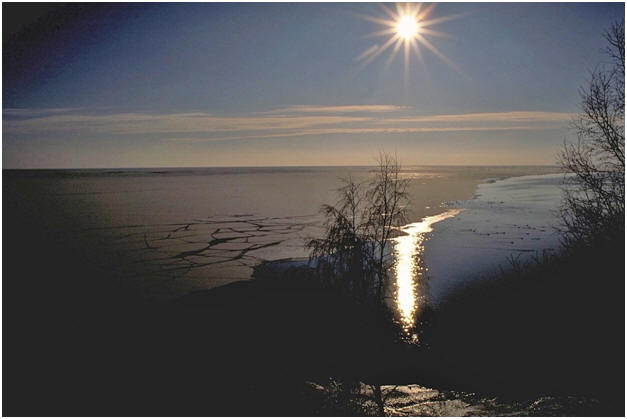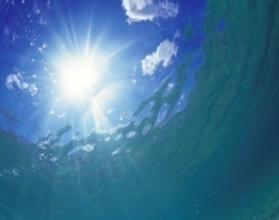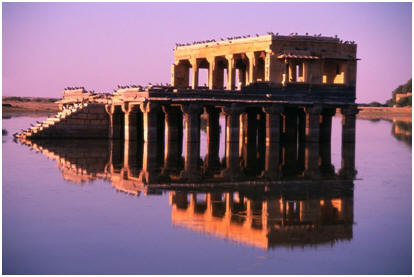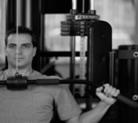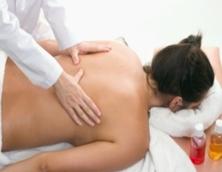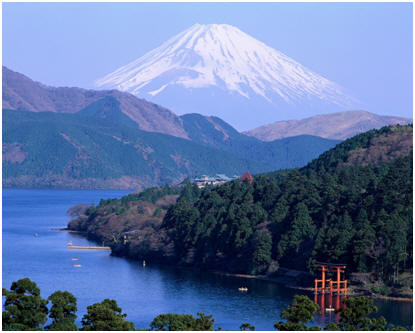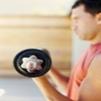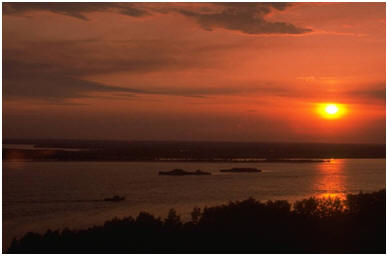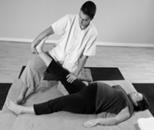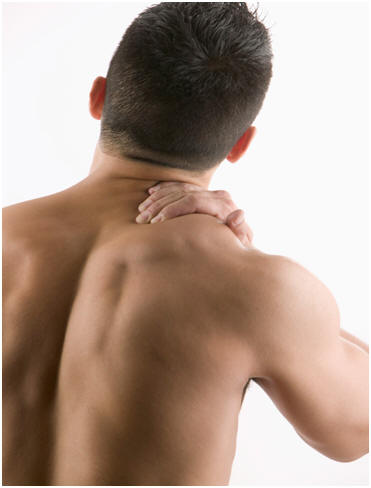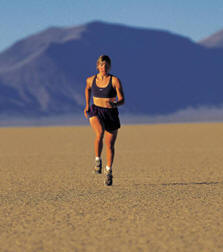
|
|
|
|
|
|
|
|
|
| F.A.Q. | · | Therapy Glossary | · | What Does Massage Therapy Treat? | · | Who needs Massage Therapy? | · | What is a Registered Massage Therapist? | · | Selecting a Massage Therapist | · | Fees | · |
Glossary of Massage Therapy Terms
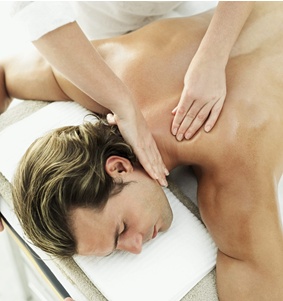
Here are some terms you may encounter while looking for a therapist.
On this page there are three ways in which you can search our glossary.
- use the alphabetical search option (below).
- scroll through the terms on this page.
- for a full list of terms, click here.
Is there a therapy not here that you would like to see included?
To contribute a term, please include the history and a definition to massage.ca you can email Glossary content by clicking
here.
Alphabetical Search:
A B C D
E F G H
I J K L
M N O P
Q R S T
U V W X
Y Z
Please read our Disclaimer.
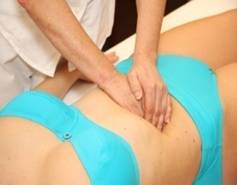 Abdominal Massage/Visceral Massage can be part of a full body treatment or a local focused treatment. Consent for abdominal massage with a full body treatment is important and should be discussed before your treatment begins. It is also better to request an abdominal treatment before you start your massage so that the therapist can plan for its inclusion. Swedish massaging of the abdomen is the common technique and is used for relieving chronic constipation and abdominal tension, and for improving lymphatic flow. Visceral manipulation can be traced back 200 years to its origins in Tibet. Jean Pierre Barrall, a French Osteopath, adapted the Tibetan version into the osteopathic technique used today. The spasms, adhesions, and discomfort of the abdomen after a severe trauma can cause chronic irritation and fascial displacement. Gentle, deep abdominal manipulation helps to reduce the blockages and restrictions of the tissues, and restores movement and energy to the organs. Visceral massage can ease back pain, indigestion, and discomfort caused by abdominal duress. See also
Visceral Manipulation.
Abdominal Massage/Visceral Massage can be part of a full body treatment or a local focused treatment. Consent for abdominal massage with a full body treatment is important and should be discussed before your treatment begins. It is also better to request an abdominal treatment before you start your massage so that the therapist can plan for its inclusion. Swedish massaging of the abdomen is the common technique and is used for relieving chronic constipation and abdominal tension, and for improving lymphatic flow. Visceral manipulation can be traced back 200 years to its origins in Tibet. Jean Pierre Barrall, a French Osteopath, adapted the Tibetan version into the osteopathic technique used today. The spasms, adhesions, and discomfort of the abdomen after a severe trauma can cause chronic irritation and fascial displacement. Gentle, deep abdominal manipulation helps to reduce the blockages and restrictions of the tissues, and restores movement and energy to the organs. Visceral massage can ease back pain, indigestion, and discomfort caused by abdominal duress. See also
Visceral Manipulation.
Activities of Normal Living Index
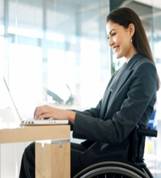 This assessment helps to determine the function and status of the adaptation of a client/patient to normal life after rehabilitation from an injury or illness. The assessment tool is known as “The Reintegration to Normal Living Index (RNLI)”.
This assessment helps to determine the function and status of the adaptation of a client/patient to normal life after rehabilitation from an injury or illness. The assessment tool is known as “The Reintegration to Normal Living Index (RNLI)”.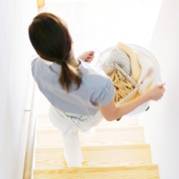 There are 11questions that are scored on a scale of 0 to 10.The patient needs to respond with numbers reflecting their perceived integration: 0 being no integration, and 10 being fully integrated. Wood-Dauphinee, Williams, and Opzoomer, the authors of RNLI, are from Montreal General Hospital and McGill University.
There are 11questions that are scored on a scale of 0 to 10.The patient needs to respond with numbers reflecting their perceived integration: 0 being no integration, and 10 being fully integrated. Wood-Dauphinee, Williams, and Opzoomer, the authors of RNLI, are from Montreal General Hospital and McGill University.
This passage was derived from “Katz Index of Independence in Activities of Daily Living (.pdf),” by Mary Skelkey, Meredith Wallace, MedSurg Nursing, April, 2002.
 This technique uses active movement by the stretcher with the help of a partner to add passive stretch or to provide resistance to the stretching motion, thereby mixing both active and passive stretching methods. Facilitated stretching is in a similar category.
This technique uses active movement by the stretcher with the help of a partner to add passive stretch or to provide resistance to the stretching motion, thereby mixing both active and passive stretching methods. Facilitated stretching is in a similar category.
Active Isolated Stretching (AIS)
AIS is a method of muscle lengthening and fascial release, developed by Aaron Mattes. It uses active movement and Reciprocal Inhibition (RI), but not isometric work, to achieve greater flexibility. The technique isolates the muscle to be stretched, and actively stretches it until the patient feels a ‘light irritation.’ After a hold for 2 seconds, the massage therapist then returns the limb to the start position. This action is repeated 8 to 10 times. Also see Reciprocal Inhibition (RI)
Active Release Technique (ART)
This active treatment involves both movement and manipulation. It can feel uncomfortable during the movement phase as the scar tissue or adhesions “break-up”. The discomfort is temporary, and subsides after the treatment. This soft tissue treatment was developed by P. Michael Leahy, a chiropractor who had a background in aeronautical engineering.
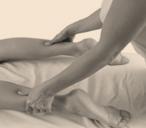 An Acupressurist stimulates the same points used in acupuncture with finger pressure, rather than inserting fine needles. Using the power and sensitivity of the hand, acupressure is effective in the relief of stress-related ailments, in self-treatment, and in preventive health care. See also
Acupuncture, Trigger Point Therapy and
Shiatsu.
An Acupressurist stimulates the same points used in acupuncture with finger pressure, rather than inserting fine needles. Using the power and sensitivity of the hand, acupressure is effective in the relief of stress-related ailments, in self-treatment, and in preventive health care. See also
Acupuncture, Trigger Point Therapy and
Shiatsu.
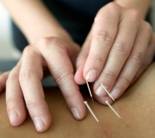 Two or more fine needles are inserted through the skin and left in position briefly, sometimes with manual or electrical stimulation. This modifies the way pain signals are received by the brain, by stimulating the nerves in the skin and muscle, and increasing the body’s release of natural painkillers (endorphin and serotonin) in the pain pathways of both the spinal cord and the brain.
Two or more fine needles are inserted through the skin and left in position briefly, sometimes with manual or electrical stimulation. This modifies the way pain signals are received by the brain, by stimulating the nerves in the skin and muscle, and increasing the body’s release of natural painkillers (endorphin and serotonin) in the pain pathways of both the spinal cord and the brain.
Ai Chi (Flowing Aquatic Energy)
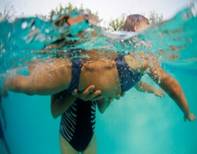 Ai Chi is a water exercise and relaxation program designed to help aquatic practitioners in the water. The exercises help in a flowing yet powerful progression. Ai chi was created by combining T’ai Chi concepts with Shiatsu and Watsu techniques. It is performed standing in shoulder-depth water using a combination of deep breathing and slow, broad movements of the arms, legs, and torso. The Ai Chi progression moves from simple breathing to upper extremity movement, to movement of the trunk, and finally to lower extremity movement. It promotes relaxation, stability, and coordinated breathing, and improves flexibility, mobility, and strength. See
Watsu and Aquatic Massage.
Ai Chi is a water exercise and relaxation program designed to help aquatic practitioners in the water. The exercises help in a flowing yet powerful progression. Ai chi was created by combining T’ai Chi concepts with Shiatsu and Watsu techniques. It is performed standing in shoulder-depth water using a combination of deep breathing and slow, broad movements of the arms, legs, and torso. The Ai Chi progression moves from simple breathing to upper extremity movement, to movement of the trunk, and finally to lower extremity movement. It promotes relaxation, stability, and coordinated breathing, and improves flexibility, mobility, and strength. See
Watsu and Aquatic Massage.
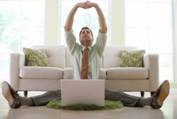 Alexander Technique is a postural system that works to improve ease and freedom of movement, as well as coordination, support, and balance. It is not a series of treatments or exercises, but rather a re-education of the mind and body to change (movement) habits in everyday activities.
Alexander Technique is a postural system that works to improve ease and freedom of movement, as well as coordination, support, and balance. It is not a series of treatments or exercises, but rather a re-education of the mind and body to change (movement) habits in everyday activities.
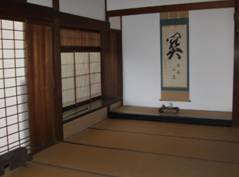 Anma means to press (An) and rub (Ma) or to spread peace by rubbing with the hands. Anma was the Chinese pronunciation of this massage technique and was brought to Japan by warrior monks from China via Korea about 1,500 years ago. The Chinese tradition is 5000 years old, and the origins of massage in China derive from India and are possibly 7,000 years old or older. After Anma came to Japan, it was further refined and developed by the Japanese into their own form. This healing art uses special techniques to stimulate key points (Tsubo) on the surface of the skin to promote the body’s natural self-healing abilities. When these points are stimulated they release muscular tension, which facilitates the circulation of blood and energy (Kiketsu). This is the intention of Anma massage. With this method, the client is fully clothed and no lubricant is used.
Anma means to press (An) and rub (Ma) or to spread peace by rubbing with the hands. Anma was the Chinese pronunciation of this massage technique and was brought to Japan by warrior monks from China via Korea about 1,500 years ago. The Chinese tradition is 5000 years old, and the origins of massage in China derive from India and are possibly 7,000 years old or older. After Anma came to Japan, it was further refined and developed by the Japanese into their own form. This healing art uses special techniques to stimulate key points (Tsubo) on the surface of the skin to promote the body’s natural self-healing abilities. When these points are stimulated they release muscular tension, which facilitates the circulation of blood and energy (Kiketsu). This is the intention of Anma massage. With this method, the client is fully clothed and no lubricant is used.
In 1964, Dr. George Goodheart, a chiropractor in Detroit Michigan, developed this technique during a patient treatment. After applying a few seconds of deep pressure upon the man’s severe muscular dysfunction, he found that the problem was eliminated. Dr. John Thie further developed a simplified version of Applied Kinesiology called Touch for Health in 1970. These systems evaluate and treat an individual’s structural, chemical, and mental aspects by muscle testing. This is the primary method of diagnosis. Manipulation is used to help restore balance and harmony in the body, along with nutrition, acupressure, exercise, and education. This passage was derived from Alternative Healing, by Hugh Burroughs and Mark Kastner, Halcyon, 1993.
Aquatic Massage therapy is a gentle, hands-on massage therapy treatment that takes advantage of the anti-gravity provided by a therapeutic pool, heated to the neutral body temperature of 98°F for passive rehabilitation. This beneficial therapy permits the body to gain a larger range of motion in the water than it does when it’s out of the water. The client floats peacefully on their back while the water helps the massage therapist to support the patient’s body.

Oftentimes a pool-noodle is used to support one end of the client (such as their legs) while the therapist supports the other end (the head and neck). Clients who are comfortable in water will benefit from the warm, gentle freedom of motion that aquatic massage permits. Aquatic therapy employs a variety of the same massage techniques that are used on land, but commonly combines these with techniques that are similar to the water therapy forms Water Dance, Watsu and Jahara massage. Recommended for clients with a restricted range of motion with conditions such as severe arthritis and osteoarthritis, or for post-surgical injuries, retired athletes, during pregnancy, and clients with any type of nerve damage (such as Fibromyalgia) or sleep disorders such as insomnia. See also Ai chi, Jahara® Technique, and Watsu.
 Aromatherapy focuses on the application and inhalation of ‘essential oils’ (distilled plant essences obtained and extracted primarily through steam). These are combined with ‘carrier oils’ (cold-pressed oils from fruit, nut, or seed sources) before being applied to the skin.
Aromatherapy focuses on the application and inhalation of ‘essential oils’ (distilled plant essences obtained and extracted primarily through steam). These are combined with ‘carrier oils’ (cold-pressed oils from fruit, nut, or seed sources) before being applied to the skin.
This is a combination of posture movement awareness exercises derived from Hellerwork. See also Hellerwork, Feldenkrais®, and Alexander Technique.
Barbara Ann Brennan Healing Through the Human Energy Field
This is a hands-on healing system that works with an persons energy consciousness structure to generate emotional, mental, physical, and spiritual health. Also see Chakra Section, Energy Healing, Reiki, Therapeutic Touch.
The Berry Method is a variety of deep massage and soft tissue manipulation. This treatment works on reducing spasms, distortions, and breaking down adhesions in the connective tissue, the smooth muscle of organs, and the skeletal muscles. The Berry method helps the body to promote its natural inclination toward corrective ease of movement and balance. A Californian physical therapist, Lauren Berry, developed this method.
The therapist works over the body and locates areas of blocked or depleted energy, by applying her/his hands to the client’s body, and correcting the imbalance.
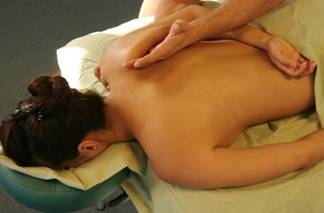 Bindegewebsmassage is a Connective Tissue Technique (CTT) or Connective Tissue Massage (CTM). It was created in Germany by Elizabeth Dicke in 1929. The therapist works with the loose connective tissue which forms both superficial and deep fascia. This web of tissue provides connection between structures throughout the body. The treatment can be 30 to 75 minutes in length, and no oils or lotions are used. A treatment plan is a series of treatments that can include up to 20 sessions, depending upon the needs of the individual patient, and their desire to relearn patterns in their body. The treatment is given with the client in a sitting or lying position.
Bindegewebsmassage is a Connective Tissue Technique (CTT) or Connective Tissue Massage (CTM). It was created in Germany by Elizabeth Dicke in 1929. The therapist works with the loose connective tissue which forms both superficial and deep fascia. This web of tissue provides connection between structures throughout the body. The treatment can be 30 to 75 minutes in length, and no oils or lotions are used. A treatment plan is a series of treatments that can include up to 20 sessions, depending upon the needs of the individual patient, and their desire to relearn patterns in their body. The treatment is given with the client in a sitting or lying position.
Bodywork therapies involve either, or a combination of, movement, touch, manipulation and/or energetic therapies. Many therapies fit in this category: Physical Therapy, Lymph Drainage, Osteopathy, Chiropractic, Structural Integration, Neuromuscular Therapy, Feldenkrais®, Yoga Therapy, Dance Therapy, Physiotherapy, Pilates, Alexander Technique, Shiatsu, Occupational Therapy, Tai Chi / Qi Gong, and Myofascial Therapy. These are systematic ‘hands on’ processes working with the soft tissues to sooth or realign the entire musculo-skeletal structure, restoring balance and ease to the body. Most, if not all, of the therapies in this glossary would fall under the term or category of bodywork.
Developed by Australian Tom Bowen, the Bowen Technique is a gentle form of light massage that can relieve discomfort. Though this treatment style it can be used on one part of the body, it is best as a full body treatment. It involves a rhythmical massage style in a series of specific moves on specific groups of points on the muscles, tendons, and nerve sheaths.
Breast Massage treatments involve gentle hands-on massage techniques to improve circulation and drainage. Depending on the condition being treated, hydrotherapy such as warm and cold wraps can also be used. The problems necessitating this treatment can arise from something as simple as clothing constricting the breast tissue. This restricts proper circulation and drainage, and can cause discomfort and pain in the breast tissues. It is important that you give your therapist verbal or written consent before breast treatment can take place. The indications for breast massage are: client requests the treatment as part of a holistic treatment for breast health, breast cancer treatments, congestion and swelling, breast pain and injury or scarring caused by surgery or trauma, pregnancy breast feeding and weaning, premenstrual and menopause, and/or trauma causing painful syndromes. The practice of breast massage should be in conjunction with (and not a substitute for) regular self-breast exams. Consult a physician when a lump is found in the breast (this area should not be massaged).
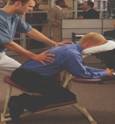
Chair Massage is massage performed in a specially-designed chair, with or without oil. The chairs are easy to carry for on-site or corporate massages.
Activation of the chakra energy is the focus of Chakra Energy Massage treatment involving massaging points on the feet. These are some of the Chakras:
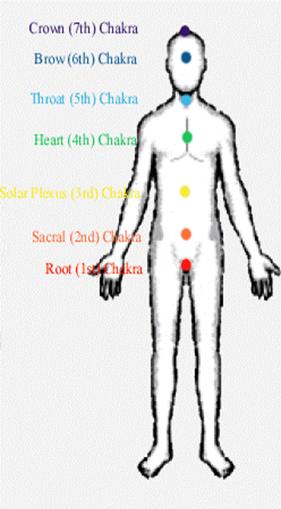 Crown is violet in colour and connects the body to the upper chakras and the Spiritual Body, our wisdom and integration of our eternal selves with our current physical selves like our umbilical cord to the Source
Crown is violet in colour and connects the body to the upper chakras and the Spiritual Body, our wisdom and integration of our eternal selves with our current physical selves like our umbilical cord to the Source
Pineal gland central nervous system, cerebral cortex, right eye
Brow Pituitary gland, pineal gland, nose, ears, left eye; some call it the "third" eye.
Throat Thyroid gland, hypothalamus, parathyroid, throat, mouth
Heart Thymus gland, heart, lungs, arms, hands, circulatory system
Solar Plexus Adrenal glands, stomach, pancreas, liver, gallbladder, nerves, muscles, nervous system
Sacral Prostate gland, spleen, ovaries, womb, genitals, testicles, bladder, adrenals
Root Adrenal glands, kidneys, colon, spinal column, legs, bones
Chakra Balancing Indian Head Massage
The Ayurvedic elements of Chakra energy balancing massage combines physical massage with a more subtle balancing, affecting a person’s chakras or energy centres. This technique primarily focuses on the three higher chakras, bringing balance to the whole person via massage of the face, head, neck, shoulders and upper arms. See also Indian Head Massage.
The energy of smooth warm basalt river stones are known to promote a harmonizing and cleansing effect, thus allowing for a grounding meditative state. While being massaged with the warm, oiled stones during this treatment, warm stones are also placed on the chakras on the front of the body. The placement is done with the intent of deep relaxation, grounding and balancing the chakra energy. See also Hot Stones.
Lewis Mehl-Madrona, MD describes Cherokee bodywork systems include breath, a form of osteopathic massage and manipulation, and energy work.
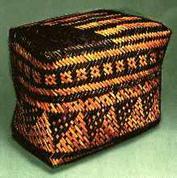 The technique is an alternation of deep pressure and gentle rocking release. The breath was also used to reanimate the body and “draw spirit” into affected tissues. The Cherokee were also familiar with acupuncture meridians and used acupuncture, with needles made of thorns or porcupine quills, in healing. In Dr. Mehl-Madrona’s book on Native American medicine, Ken Cohen, who worked with a Cherokee mentor, noted, “Massage, healing touch, and non-contact healing are practiced by Native healers throughout North and South America. Often the hands are used to sweep away or remove spiritual intrusions or to brush in healing powers. Cherokees warm their hands over coals and circle their palms either on or above an affected area. Some healers hold their hands to the front and back of an affected area, creating what they now call ‘electrodes within the body.’ The healer imagines that electricity is moving from one hand to the other. Sometimes the muscles are rubbed in a manner similar to Western massage. To increase the healing effect, the medicine person massages specific therapeutic points.” Shamanic practitioners see themselves as conduits of healing energy from a spiritual source such as a powerful animal, or spirit guide. Before attempting a cure, the spiritual cause of the illness is first addressed. While healing techniques are unique to each tribe, all subscribe to the ancient native traditions of using medicinal herbs, aromatic steam and massage, this treatment offers detoxifying purification healing rituals with gentle dry brush exfoliation and a the stimulating combination of herb and flower essences. Energy healing is, and has been for generations, an intrinsic part of Cherokee people’s existence. Dr. Mehl-Madrona is a physician certified in family practice, geriatrics and psychiatry, and a healer of Cherokee and Lakota heritage. He is currently Associate Professor of Family Medicine and Psychiatry at the University of Saskatchewan College of Medicine, Canada.
The technique is an alternation of deep pressure and gentle rocking release. The breath was also used to reanimate the body and “draw spirit” into affected tissues. The Cherokee were also familiar with acupuncture meridians and used acupuncture, with needles made of thorns or porcupine quills, in healing. In Dr. Mehl-Madrona’s book on Native American medicine, Ken Cohen, who worked with a Cherokee mentor, noted, “Massage, healing touch, and non-contact healing are practiced by Native healers throughout North and South America. Often the hands are used to sweep away or remove spiritual intrusions or to brush in healing powers. Cherokees warm their hands over coals and circle their palms either on or above an affected area. Some healers hold their hands to the front and back of an affected area, creating what they now call ‘electrodes within the body.’ The healer imagines that electricity is moving from one hand to the other. Sometimes the muscles are rubbed in a manner similar to Western massage. To increase the healing effect, the medicine person massages specific therapeutic points.” Shamanic practitioners see themselves as conduits of healing energy from a spiritual source such as a powerful animal, or spirit guide. Before attempting a cure, the spiritual cause of the illness is first addressed. While healing techniques are unique to each tribe, all subscribe to the ancient native traditions of using medicinal herbs, aromatic steam and massage, this treatment offers detoxifying purification healing rituals with gentle dry brush exfoliation and a the stimulating combination of herb and flower essences. Energy healing is, and has been for generations, an intrinsic part of Cherokee people’s existence. Dr. Mehl-Madrona is a physician certified in family practice, geriatrics and psychiatry, and a healer of Cherokee and Lakota heritage. He is currently Associate Professor of Family Medicine and Psychiatry at the University of Saskatchewan College of Medicine, Canada.
This is a modern trademarked term for what is commonly known as Indian Head Massage. See also Indian head Massage.
Chinese Massage Tuina (Tui Na)
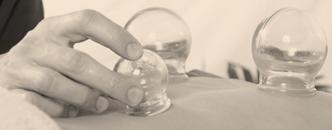 Tuina (Tui Na pronounced ‘t-weigh na’) Massage uses the traditional Chinese medical theory of the flow of qi (chi), the body’s life energy through meridians as its basic therapeutic orientation. Records show massage has been practised in China for thousands of years. The term “tui na” first appeared in the Ming Dynasty text of the Pediatric Tui Na Classic in 1601. Tui Na’s massage, stretching, acupressure, and over 365 different hand manipulations of the muscles and tendons, directly affect the flow of qi, thus, affecting the relationships of the muscles and ligaments (called bone-setting). External herbal poultices, compresses, liniments, and salves, may also be used to enhance the other therapeutic methods. Tui Na incorporates techniques that are similar to Western and Asian massage, as well as chiropractic, osteopathic, and western physical therapy. Tui Na literally translates to “push pull,” with tui meaning to push and na meaning to lift and squeeze. Refined over the centuries, tui na facilitates healing by regulating the circulation of blood and qi, which controls body function and enhances resistance to disease, while seeking to allow the body to naturally heal itself. See also
Acupressure.
Tuina (Tui Na pronounced ‘t-weigh na’) Massage uses the traditional Chinese medical theory of the flow of qi (chi), the body’s life energy through meridians as its basic therapeutic orientation. Records show massage has been practised in China for thousands of years. The term “tui na” first appeared in the Ming Dynasty text of the Pediatric Tui Na Classic in 1601. Tui Na’s massage, stretching, acupressure, and over 365 different hand manipulations of the muscles and tendons, directly affect the flow of qi, thus, affecting the relationships of the muscles and ligaments (called bone-setting). External herbal poultices, compresses, liniments, and salves, may also be used to enhance the other therapeutic methods. Tui Na incorporates techniques that are similar to Western and Asian massage, as well as chiropractic, osteopathic, and western physical therapy. Tui Na literally translates to “push pull,” with tui meaning to push and na meaning to lift and squeeze. Refined over the centuries, tui na facilitates healing by regulating the circulation of blood and qi, which controls body function and enhances resistance to disease, while seeking to allow the body to naturally heal itself. See also
Acupressure.
This method is based on an osteopathic technique for finding and correcting cerebral and spinal imbalances or blockages that may cause tissue, emotional, and postural dysfunction. It involves assessing and addressing the movement of the cerebrospinal fluid (CSF), which can be restricted by trauma to the body. Through gentle work with the spine, the skull and its cranial sutures, the diaphragm, and the fascia, the restrictions of nerve passages are said to be eased, and the movement of CSF through the spinal cord can be optimized. No oils are used. Following from Osteopath William Sutherland’s cranial research and teachings from 1953, John E. Upledger developed his Craniosacral technique based on research on the cerebral spinal pulse developed by his Osteopathic colleagues at Michigan State University in the 1980’s. The Upledger Institute was founded in 1987.
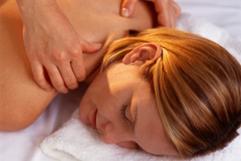 This is a form of intense work that aims to release Myofascial (connective tissue) restrictions in the body, and thereby frequently breaking up restrictive scar tissue and adhesions. Relief of chronic tension helps to increase the range of motion in the joints. These massage techniques tend to be slower and require the application of more pressure. The massage therapist applies the intense pressure to the deeper tissue structures of the muscle, in order to restore the length and flexibility to the fascia, a fibrous tissue that surrounds the muscles and organs. All clients are asked to inform their therapist immediately if and when the stroke pressure is too intense. Little or no oil or lotions is used.
This is a form of intense work that aims to release Myofascial (connective tissue) restrictions in the body, and thereby frequently breaking up restrictive scar tissue and adhesions. Relief of chronic tension helps to increase the range of motion in the joints. These massage techniques tend to be slower and require the application of more pressure. The massage therapist applies the intense pressure to the deeper tissue structures of the muscle, in order to restore the length and flexibility to the fascia, a fibrous tissue that surrounds the muscles and organs. All clients are asked to inform their therapist immediately if and when the stroke pressure is too intense. Little or no oil or lotions is used.
Deep Muscle Therapy also known as Canadian Massage
Deep Muscle Therapy is a technique developed by Thérèse C. Pfrimmer, a registered massage therapist from Goderich, Ontario. Originating in Europe, Thérèse settled in Canada; in 1946 she was diagnosed with incurable paralysis in her lower extremities. She fashioned this deep frictioning move herself, and self treated her condition. This treatment was thought to be responsible for bringing about her full recovery. Later, she spent 34 years of research on muscles, and trained others in her technique until her death in 1980. Therese documented her findings in 1970 in her book, “Muscles-Your Invisible Bonds.” The technique works by stimulating the lymphatic and circulatory systems to promote cellular repair while removing hazardous toxins. This treatment’s aim is to correct and prevent serious muscle conditions, such as those that occur with Multiple Sclerosis, Muscular Dystrophy, and Parkinson’s Disease.
Deep Tissue Therapy
Deep Tissue Therapy is a phrase which refers to a form of client-directed, area-specific massage, as opposed to relaxation massage. Little or no oils are used, promoting access to the deeper muscular and fascial structures below the surface.
Energy Balancing Massage (EBM)
Mark Brown, a Natural Therapist and Chiropractor, coined the term and developed the EBM technique fifteen years ago. This work involves the continuous movement of energy throughout the body, following the energy patterns and engaging energy centres. The pressure is light-to-firm touch, and can be done through natural fiber clothing. Many emotions and sensations can be experienced while in therapy. The blocked energy in your body can be released, promoting deep relaxation and an enhanced capacity to experience life.
Energy Healing is a gentle, non-invasive modality that works on your energetic level chakras, energy field and physical body, to rebalance and promote harmony. This is a physical-energetic interface, with its relationship to health and disease. The work is about energy consciousness, chakras, auric fields, and healing in terms of human multidimensional anatomy, physiology, pathology, as well as emotional, mental, and spiritual. Each practitioner brings a different focus to their energy work.
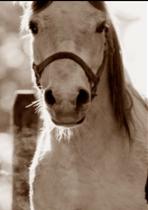 This is a specialized area of massage therapy for horses, developed to aid the equine world. The horse’s body often requires rehabilitation, relief from pain and stress, detoxification, improved circulation, and improved joint mobility. Massage is best for increasing circulation, relaxing muscle spasms, relieving tension, enhancing muscle tone, and increasing the range of motion in high performance horses. Competitive riders and horse owners know the advantage of regular hands-on massage treatments to maximize the potential of their horses.
This is a specialized area of massage therapy for horses, developed to aid the equine world. The horse’s body often requires rehabilitation, relief from pain and stress, detoxification, improved circulation, and improved joint mobility. Massage is best for increasing circulation, relaxing muscle spasms, relieving tension, enhancing muscle tone, and increasing the range of motion in high performance horses. Competitive riders and horse owners know the advantage of regular hands-on massage treatments to maximize the potential of their horses.
Esalen® Massage or Esalen Tissue Work
Esalen is the amalgamation of Sensory Awareness, Oriental Medicine, Swedish Massage, and Meditation, to the deeper work borrowed from Rolfing. Also in their movement, were discoveries such as Feldenkrais’s neural co-ordinates, and Tragers’s passive movement, along with yogic stretches. With the inclusion of the somatic mind-body’s psychology, as well as energetically based polarity and cranial-sacral work, Esalen is an all-inclusive approach. Worldwide, two hundred centers exist today based on this experiential learning. The name “Esalen” is from the Native American tribe known as the Essalen, which like the Esalen Institute, is located along California’s Big Sur coastline. This institute was founded in 1962 by Michael Murphy and Richard Price, for whom explorations into both eastern and western philosophies, as well as the teachings of Aldous Huxley called the “human potential,” would be a mainstay. The individuality of each massage therapist creates a unique therapeutic experience with a multitude of combinations of soft and deep tissue techniques, focusing on the extremities and torso, body awareness, and relaxation.
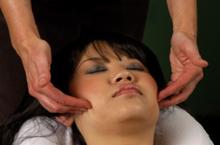 This refers to focusing on the face for treatment for an entire session or can a portion of a massage treatment. Aside from slowing the aging process, ongoing treatments can maintain healthier skin, muscle, and nervous tissues and improve facial tone. Most often relief of stress, headaches, jaw aches, pain, and sinus congestion are the primary reasons for a facial massage. Swedish and pressure points on the face and neck are stimulated in order to release the vital energy flow. A small amount of oil or lotion is often applied to facilitate movement over the delicate facial areas.
This refers to focusing on the face for treatment for an entire session or can a portion of a massage treatment. Aside from slowing the aging process, ongoing treatments can maintain healthier skin, muscle, and nervous tissues and improve facial tone. Most often relief of stress, headaches, jaw aches, pain, and sinus congestion are the primary reasons for a facial massage. Swedish and pressure points on the face and neck are stimulated in order to release the vital energy flow. A small amount of oil or lotion is often applied to facilitate movement over the delicate facial areas.
Moshé Pinchas Feldenkrais (1904 to 1984) with an engineering degree in hand, founded this approach to identifying one’s space in relation to the earth. Moshé, a Russian-born Israeli educator, promoted self awareness through movement, with the concept of no separation between mind and body. His method establishes new connections between the brain and body through movement re-education. His practice of martial arts, Jui Jitsu, and Judo at his club in France informed him when he developed this approach to movement to heal an injury he had sustained in war. He began to teach his awareness to his fellow injured patients.His technique retrains the central nervous system through the skeletal system; unconscious movement is brought into conscious awareness and old patterns are eliminated and replaced with new skills. These methods are taught in one to one sessions and or through group classes.
This massage method requires two in-synch massage therapists to simultaneously massage the client’s left and right sides. The well practiced motions of equalizing pressure and choreographed smooth rhythms have a potential to create a seamless balanced massage and a very stimulating experience.
Hawaiian Massage See Lomi Lomi
Healing Touch is an energy exchange therapy during which the therapist uses the hands as a focus to facilitate the healing process and to induce deep relaxation.
Joseph Heller founded this mix of deep-tissue structural bodywork and movement education. Hellerwork involves a series of eleven sessions; during each session one hour is devoted to bodywork and thirty minutes to movement therapy. The patient learns to move in ways that minimize effort, emphasize vertical realignment, and release chronic stress and tension. The patient explores how attitudes, thoughts, beliefs, and feelings impacts her/his body.
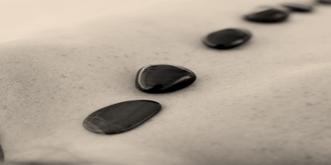 This is a geothermal hydrotherapy technique using stones heated by water. The basalt stones are dark volcanic rock with high levels of iron, and are able to absorb and retain heat. Selected for their smoothness, they are obtained from the rushing waters of riverbeds. The iron in the stones grounds the body. The stones held in the palm of the hand are used for massaging the body’s tissues, or placed on the body’s energy centres, the stones may be used to improve circulation and to calm the nervous system. Cold stones are often used to reduce the inflammation and refresh and tone the heated tissues. The use of hot stones for healing dates back to ancient times. In the 1980’s, the Arizona massage therapist Mary Nelson introduced her popular style known as La Stone Therapy.
This is a geothermal hydrotherapy technique using stones heated by water. The basalt stones are dark volcanic rock with high levels of iron, and are able to absorb and retain heat. Selected for their smoothness, they are obtained from the rushing waters of riverbeds. The iron in the stones grounds the body. The stones held in the palm of the hand are used for massaging the body’s tissues, or placed on the body’s energy centres, the stones may be used to improve circulation and to calm the nervous system. Cold stones are often used to reduce the inflammation and refresh and tone the heated tissues. The use of hot stones for healing dates back to ancient times. In the 1980’s, the Arizona massage therapist Mary Nelson introduced her popular style known as La Stone Therapy.
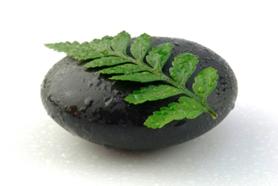 This term literally means water therapy. The belief that water had healing properties goes back far before the Greeks of the Hellenistic period, who were the first known people to build marble temples for bathing nearby natural springs. They employed the sound of running water for medicinal purposes to sooth anxiety. Sebastian Kneipp, the Bavarian priest from Worshofen, brought this system of healing involving the application of water back into style in the mid 1800’s. Kneipp used the various properties of water to facilitate wellness via temperature and pressure. Hydrotherapy is commonly used today to facilitate healing. This takes many forms, from running water to ice, heat packs, Scotch hoses, aquatic massage, hot stone massage, Swiss showers, underwater massage, herbal baths, thalassotherapy, Vichy treatments, warm pool exercise, and Kneipp therapy, to name but a few.
This term literally means water therapy. The belief that water had healing properties goes back far before the Greeks of the Hellenistic period, who were the first known people to build marble temples for bathing nearby natural springs. They employed the sound of running water for medicinal purposes to sooth anxiety. Sebastian Kneipp, the Bavarian priest from Worshofen, brought this system of healing involving the application of water back into style in the mid 1800’s. Kneipp used the various properties of water to facilitate wellness via temperature and pressure. Hydrotherapy is commonly used today to facilitate healing. This takes many forms, from running water to ice, heat packs, Scotch hoses, aquatic massage, hot stone massage, Swiss showers, underwater massage, herbal baths, thalassotherapy, Vichy treatments, warm pool exercise, and Kneipp therapy, to name but a few.
Indian Head Massage also known under the trademarked term Champissage™
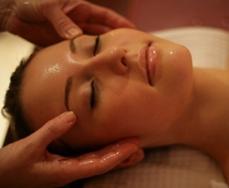 Brought by Narendra Mehta to the west in the 1970’s, this therapy is now practiced all over Europe. The technique originates from the Ayurvedic system of healing practiced for thousands of years in India. Ancient Sanskrit writings have recently shown the Ayurvedic system to have been around for approximately seven thousand years. Today Indian Head Massage is a part of the cultural daily practice for Indian families seeking relaxation and healing. The technique involves treatment of the head, neck and face. All of these, including the facial areas, are massaged to manipulate the energy channels. The aim is to clear impediments in the energy flow that cause an excess of negative energy. These obstructions are purported to cause ailments such as stress, nociception, and hair loss. Treatment is done clothed and seated, and lasts up to 45 minutes.
Brought by Narendra Mehta to the west in the 1970’s, this therapy is now practiced all over Europe. The technique originates from the Ayurvedic system of healing practiced for thousands of years in India. Ancient Sanskrit writings have recently shown the Ayurvedic system to have been around for approximately seven thousand years. Today Indian Head Massage is a part of the cultural daily practice for Indian families seeking relaxation and healing. The technique involves treatment of the head, neck and face. All of these, including the facial areas, are massaged to manipulate the energy channels. The aim is to clear impediments in the energy flow that cause an excess of negative energy. These obstructions are purported to cause ailments such as stress, nociception, and hair loss. Treatment is done clothed and seated, and lasts up to 45 minutes.
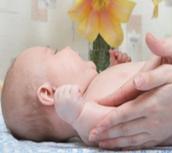 This technique deals with teaching parents how to massage their infants. Hospital neonatal care units utilize this specialized form of touch and infant massage to manage the critical weight gain of premature infants. It is an important technique to create a strong bond between a parents and her/his child, and to promote growth from the intimate communication, benefits, and pleasures of touch. See the
Touch Institute studies.
This technique deals with teaching parents how to massage their infants. Hospital neonatal care units utilize this specialized form of touch and infant massage to manage the critical weight gain of premature infants. It is an important technique to create a strong bond between a parents and her/his child, and to promote growth from the intimate communication, benefits, and pleasures of touch. See the
Touch Institute studies.
Lansing Barrett Gresham compiled his studies of somatic disciplines before developing Integrated Awareness® and the Body’s Map Of Consciousness®. He was inspired by the Feldenkrais Method®, Craniosacral therapy by Upledger, Visceral Manipulation of Jean Barral, Hypnotherapy of Milton Erickson, Zero Balancing® of Fritz Smith, June D’Estelle, the channeler of Illuminated Mind®, and many more. His body map relates human consciousness with specific body sites and patterns. The map view is non-causal and affords insight and healing for the entire human experience. The aim of this movement therapy is to help the client make new choices and to fully express who they are in the present.
Integrative Manual Therapy (IMT)
Practitioners use advanced and gentle palpation techniques in order to “listen” with their hands, and to locate and address specific issues dealing with muscles, joint biomechanics, bones, organs, circulatory, lymphatic, immune, connective tissue, nervous systems, and the bio-energy field. The body’s own technology is infinitely more advanced than anything man has created to date, with only its own self healing properties. The aim here is to locate the cause of the ailment and to reopen the body’s natural lines of communication, using IMTs 20 thousand individual yet interrelated techniques, the genesis of which are osteopathic in nature. These techniques are organized into a systems approach which encourages the body to continue to work on healing itself even after a session. A treatment plan is designed, while patients remain fully clothed. Gentle pressures, extensions, and rotations are systematically applied to release blockages and correct other dysfunctions.
The therapist floats the client utilizing several slow, flowing, circular movements. This aquatic therapy works with body awareness, body mechanics, and the power of water. It uses micro movements to obtain structural alignment of the body. The gradual, passive activity, together with the warm water, takes relaxation and a feeling of well-being to another level. Often the client experiences a sense of expansion. A flexible floatation tool helps to support the body. Combinations of movements provide gentle traction which helps to elongate the spine and decompress the body and mind. The body structure and its relationship to the unique physical properties of water make this treatment a must experience.
Jin Shin Do was developed by psychotherapist, Iona Marsaa Teeguarden, who merged Reichian segmental theory and Taoist yogic philosophy and breathing into her version of the body mind continuum. Jin Shin Do combines gentle, finger pressure on points derived from Japanese acupressure and classic Chinese acupuncture theory. The practitioner holds “local points” in tension areas together with related “distal points.” She/he uses acupressure along with body focusing techniques to release emotional and physical tension. The treatment term is 10 sessions of 90 minutes; the client is fully-clothed lying on a massage table.
Mobilization involves moving the joints in a way that you cannot move them yourself. It involves small movements of the actual bone surfaces on each other. There are many different movements of mobilization, some that help to decrease pain and others that help to increase the movement range of the joints. Typically, in physical therapy, mobilization is understood as a repetitive passive movement of varying amplitudes of low velocity applied at different parts of the range of motion, depending upon the effect desired.
The practitioner will move the joints to achieve a full, pain-free range of motion, with a special stretching technique. This technique is derived from the osteopathic system.
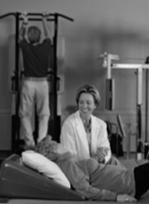 Kinesiology is the scientific study of human movement. Professional Kinesiologists have obtained a university degree and practise the assessment of movement. They can work in disability management, case coordination, health and safety, ergonomics, and clinical rehabilitation, the rehabilitation, prevention, and management of disorders in order to maintain, rehabilitate, and enhance movement. They work with performance and function in the areas of sport, recreation, work, exercise, and activities of daily living.
Kinesiology is the scientific study of human movement. Professional Kinesiologists have obtained a university degree and practise the assessment of movement. They can work in disability management, case coordination, health and safety, ergonomics, and clinical rehabilitation, the rehabilitation, prevention, and management of disorders in order to maintain, rehabilitate, and enhance movement. They work with performance and function in the areas of sport, recreation, work, exercise, and activities of daily living.
Lomi Lomi the Hawaiian Massage
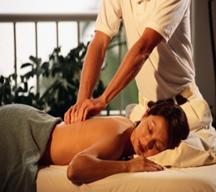 Practiced for centuries, Lomi Lomi is the ancient Hawaiian healing art. In pre-missionary days the name Kahunas referred to a definite group in Hawaiian society, who were the experts in life and spirituality. The practices of the Kahunas remained carefully guarded secrets. Their successors, when selected, were trained in patience and understanding, and to become a lover of wisdom, knowledge, and self-awareness. Only when accomplished did they become the recipient of the healing secrets. Primary to this healing form is the intent of the loving touch, which utilizes finger, palm, and elbow strokes. Kukui nut, macadamia nut and coconut oils are used as lubricants and nutritional moisturizers during the massage. Also See
Native Healing Practices
Practiced for centuries, Lomi Lomi is the ancient Hawaiian healing art. In pre-missionary days the name Kahunas referred to a definite group in Hawaiian society, who were the experts in life and spirituality. The practices of the Kahunas remained carefully guarded secrets. Their successors, when selected, were trained in patience and understanding, and to become a lover of wisdom, knowledge, and self-awareness. Only when accomplished did they become the recipient of the healing secrets. Primary to this healing form is the intent of the loving touch, which utilizes finger, palm, and elbow strokes. Kukui nut, macadamia nut and coconut oils are used as lubricants and nutritional moisturizers during the massage. Also See
Native Healing Practices
A hands-on method for lymphatic drainage involving flat hands utilizing all of the fingers to stimulate the lymph glands to drain fluids of metabolic exudates from the extremities. These feather-like movements help the body to eliminate waste and strengthen the immune system, thereby increasing resistance to illness. This is an important part of our circulatory system. The 600 or so lymphatic pathways called lymphangion contain spiral muscles innervated by the autonomic nervous system. They are collections of lymph nodes that act like little workshops to filter and purify, retrieving fluid and breaking down pathogens and toxins within the lymphocytes and macrophages cells. The lymph is 96 percent water; this clear liquid contains proteins, digested fats, white blood cells, hormones, and waste products. The lymph is passively pumped by the actions of the muscles, and secondary to the heart’s action, towards the organs of purification to be cleansed. Emil Vodder, a Danish massage therapist, researched and compiled experiential evidence to help clients to heal. His technique is known as Manual Lymph Drainage, or MLD. A more recent version is called Lymph Drainage Therapy (LDT), created by Dr Bruno Chikly of France.
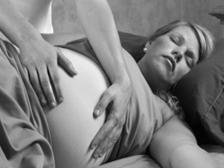 The practitioner supports a woman during the different stages of labour and childbirth, emphasizing complementary techniques, including breathing, massage and relaxation, the non-pharmacological methods of pain relief. Research is confirming the ancient knowledge that compassionate nurturing touch during labour can boost emotional satisfaction and reduce the pain of labour.
The practitioner supports a woman during the different stages of labour and childbirth, emphasizing complementary techniques, including breathing, massage and relaxation, the non-pharmacological methods of pain relief. Research is confirming the ancient knowledge that compassionate nurturing touch during labour can boost emotional satisfaction and reduce the pain of labour.
Emil Vodder, a Danish massage therapist, used research and experiential evidence to help his clients to heal. His technique is known as Manual Lymph Drainage, or MLD. This method for lymphatic drainage involves flat hands and using all of the fingers to simulate wave-like movements. The results include the reduction of certain types of edema (those resulting from trauma and/or scarring). See also Lymph Drainage.
Massage Therapy/ Massage Therapist
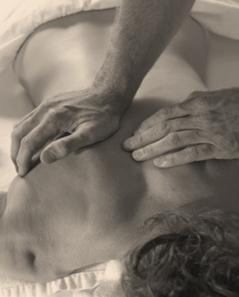 The practice of massage therapy is the assessment of the soft tissue and joints of the body, and the treatment and prevention of physical dysfunction of and pain in the soft tissue and joints by manipulation. This manipulation is used to develop, maintain, rehabilitate or augment physical function, or relieve pain. (Ontario’s Massage Therapy Act 1991) A Professional Massage Therapist has obtained a diploma, license, or certificate to practice massage therapy. Click here to see
regulations.
The practice of massage therapy is the assessment of the soft tissue and joints of the body, and the treatment and prevention of physical dysfunction of and pain in the soft tissue and joints by manipulation. This manipulation is used to develop, maintain, rehabilitate or augment physical function, or relieve pain. (Ontario’s Massage Therapy Act 1991) A Professional Massage Therapist has obtained a diploma, license, or certificate to practice massage therapy. Click here to see
regulations.
Once the client’s health history form has been completed, a treatment begins with an intake interview to identify the client’s treatment goals and any risk of harm such as the presence of disease or other physical issues that would be contraindicative to the client receiving massage therapy. Massage therapy is a planned palpation of the soft tissues of the body. A therapist has a unique variety of modalities in their tool kit in addition to their basic college training program. Some, but not all, of these modalities are listed here in this glossary. The rhythmic movements of Swedish massage techniques are the basics tools for the massage therapist. These are known as effleurage - a firm or light soothing, stroking movement, and kneading, gliding, percussion, friction, vibrations, compression, petrissage - a lifting or picking up muscles and rolling the folds of skin, and tapotement - a light karate move with the side of the hand, usually with partly flexed fingers. Some or all of these movements may be involved in a treatment, and these techniques may be applied with or without the aid of lubricants. Passive or active stretching, kept within the normal anatomical range of movement, is often involved in a treatment plan. Massage therapy also uses a variety of hydrotherapy, remedial exercise, progressive exercise, strengthening exercise, and joint play.
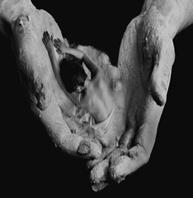
The purpose of the practice of massage is to enhance the general health and wellbeing of the recipient. Massage does not include the diagnosis of a specific pathology, the prescription of drugs or controlled substances, or spinal manipulation, as these acts are outside of the scope of massage therapy practice.
For Massage therapy treatment of musculoskeletal conditions, click here to see more of what massage therapy treats.
A branch of exercise therapy where the patient performs exercises using specially designed apparatii, without assistance, but under the constant supervision of the therapist.
This is a name used in some jurisdictions where massage training may not cover rehabilitation. Therefore, this form of Swedish massage must be distinguished from other forms of massage and therapists who do not do rehabilitation. In these instances and in these jurisdictions, medics send patients with a prescription that directs the course of treatment to a massage therapist who does medical rehabilitation. This massage therapist will treat injuries and a wide variety of illnesses. These treatments are often of short duration, like physiotherapy sessions, and deal with only the problem or injured area. In jurisdictions where Massage Therapists are regulated, primary healthcare providers, the roll of the doctor is to diagnose the injury or illness but not to direct massage therapy care or treatment.
Muscle Energy Techniques (MET)
MET are treatments in which a patient, on request, actively uses his muscles from a controlled position, in a specific direction and against a counter force. These techniques target the soft tissues and joint mobilization. MET was developed in Osteopathy about the same time PNF was in Physiotherapy. Like PNF, MET uses the isometric contraction of the target muscle before the stretch; however, MET uses only minimal force during the isometric phase and the stretch is done passively. These techniques are used to strengthen weak muscles, stretch tight muscles and fascia, mobilize joints in which movement is restricted, and improve local circulation.
This technique of stretching the fascia, directly or indirectly, allows the connective tissue fibers to reorganize and releases bonds between fascia, integument, muscles, and bones. It is mainly applied with the goal of eliminating pain, increasing range of motion, and balancing the body. Myofascial Release utilizes soft tissue manipulation techniques (connective tissue massage, soft tissue mobilization, Rolfing, strain-counter-strain, etc). The therapist is trained to manipulate and distinguish how much pressure and movement to use, the direction of the stretch, and the duration of the stretch, incorporating feedback given by the physical and verbal responses of the client.
There are two main schools of Myofascial release: the direct and the indirect method. Therapists practising direct Myofascial Release use knuckles, elbows, or other tools to slowly sink into the restricted fascia, applying a few kilograms of force or tens of Newtons, and then stretching the fascia. This is also known as deep tissue work. The direct form of Myofascial release seeks changes in the structure by stretching, the elongation of fascia, or the mobilization of adhesive tissues. The indirect method of Myofascial Release involves a gentle stretch, with the pressure of a few grams; the hands tend to go with the restricted fascia, to hold the stretch and to allow the fascia to ‘unwind’ itself. The gentle traction applied to the restricted fascia will result in heat and increased blood flow in the affected area. Popularized in the 1980s, the indirect technique originated from the concepts of Andrew Taylor Stills, who founded osteopathic medicine in the late 19th century, and was further developed by his successors in osteopathy schools.
Native American Bodywork Practices
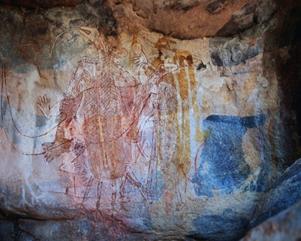 by Lewis Mehl-Madrona, MD. This article is Included in this glossary with the permission of the author.
by Lewis Mehl-Madrona, MD. This article is Included in this glossary with the permission of the author.
In this piece, Lewis Mehl-Madrona, who is of Cherokee and Lakota heritage, shares insights into types of bodywork practiced by Native American peoples. All peoples have methods for hands-on therapy, what we now call bodywork. The Cherokee people of North America, for example, were well versed in body therapies and energy healing. They developed a comprehensive, sophisticated bodywork system that encompassed a form of osteopathic massage and manipulation, breath, and energy work. Central to this technique are the alternation of deep pressure and gentle rocking release. The breath was also used to reanimate the body and “draw spirit” into affected tissues. They also used crystal scanning and healing as well as the channeling of spirits and energy medicine. The Cherokee were also familiar with acupuncture meridians and used acupuncture, with needles made of thorns or porcupine quills, in healing. A nineteenth-century monograph, the Swimmer manuscript in the Smithsonian Institute, speaks to the use of acupuncture by the “primitive savages, when every civilized person would know that the proper treatment is bleeding with leeches.” In his book on Native American medicine, Ken Cohen, who worked with a Cherokee mentor, noted, “Massage, healing touch, and noncontact healing are practiced by Native healers throughout North and South America. Often the hands are used to sweep away or remove spiritual intrusions or to brush in healing powers. Cherokees warm their hands over coals and circle their palms either on or above an affected area. Some healers hold their hands to the front and back of an affected area, creating what they now call ‘electrodes within the body.’ The healer imagines that electricity is moving from one hand to the other. Sometimes the muscles are rubbed in a manner similar to Western massage. To increase the healing effect, the medicine person massages specific therapeutic points.”
A Variety of Bodywork Traditions
Other bodywork practices are found throughout Native American cultures. The Zuni pueblo in New Mexico practice a technique very similar to the high-velocity adjustment of the neck and spine popularized as chiropractic. Dene and Cherokee bone setters have all but disappeared, but accounts from the nineteenth century support the belief that most felt it was safer to go to a Dene bone setter than to a conventional physician of that era. (The Dene people live in Northern New Mexico and Arizona and are often called Navajo, though that is not a term they use.)
The Hopi people and their practices were the source of inspiration for a type of massage now called Hakomi. Native American practices, in which hot and cold stones are used to deeply penetrate muscles and tissues to reduce pain and inflammation are what we now know as stone massage. All of these practices integrate physical, emotional, psychological, and spiritual aspects of a person.
Discussion exists among Native American scholars as to whether A.J. Still, the father of American osteopathic medicine, who was also the physician for the Shawnee Nation for more than 20 years, lifted much of what became osteopathic medicine or chiropractic from Shawnee healing practices. The Shawnee were originally native to northern Kentucky and southern Ohio and were neighbors to the Cherokee, with whom they share many similarities in bodywork practices. According to this theory, Still took the techniques of Shawnee bodywork and rendered them mechanical as fitted the European paradigm of the day (Shawnee concepts were decidedly more energetic and spiritual). He marketed these techniques and developed the first colleges of osteopathy in the United States.
Hawai’ian Lomi lomi
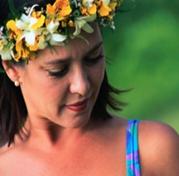 Native Hawaiians’ have kept the lomi lomi tradition alive with the help of eager tourists. Lomi lomi is a sacred hands-on form of transformational bodywork based in ancient traditions of Polynesian influence found throughout the islands of the Pacific. Deeply spiritual in nature, it was passed down from generation to generation and practiced by the Kahunas, the shamans or healers, to align a person’s physical, emotional, and spiritual bodies, renewing the mind-body connection and facilitating the body’s innate ability to heal.
Native Hawaiians’ have kept the lomi lomi tradition alive with the help of eager tourists. Lomi lomi is a sacred hands-on form of transformational bodywork based in ancient traditions of Polynesian influence found throughout the islands of the Pacific. Deeply spiritual in nature, it was passed down from generation to generation and practiced by the Kahunas, the shamans or healers, to align a person’s physical, emotional, and spiritual bodies, renewing the mind-body connection and facilitating the body’s innate ability to heal.
Hawaiian-born nurse, Margaret Machado, formalized the technique. The strokes used are similar to Japan’s shiatsu technique and are often deeper than Swedish massage, the type most Americans are familiar with. Pressure with fingers at certain points is also part of the technique, but it is of shorter duration than most acupressure. Two identifying techniques of authentic lomi lomi are the emphasis on spirit/body connection and the use of forearm and elbow as a massage tool.
Recognizing Native Practices
Unfortunately, little has been done to recognize Native healing practices, although some states have acknowledged the touch therapies provided by traditional healers. For example, the state of Alabama has stated, “Native American healers practicing traditional healing practices are exempt from compliance with the Act [Massage Therapy Act] and these rules and regulations, provided they do not represent or advertise themselves as massage therapists.”
Personally, I had the opportunity to learn Cherokee bodywork techniques from two older women who practiced it, and I am committed to making sure that it does not disappear. I teach this approach because I wish to continue to restore the strength and the resilience of the Cherokee approach to touch therapies that has characterized Cherokee medicine for centuries.
Lewis Mehl-Madrona, MD, graduated from Stanford University School of Medicine and trained in family medicine, psychiatry, and clinical psychology. He has been on the faculties of several medical schools and is the author of Coyote Medicine, Coyote Healing, and Coyote Wisdom, a trilogy of books on what Native culture has to offer the modern world. Lewis is working with aboriginal communities to develop uniquely aboriginal styles of healing and health care for use in those communities.
Overview of traditional North American healing practices: These practices are based on the belief that healing has a spiritual aspect that must be addressed. Elders say that they heal both the body and soul, as well as restore harmony to the community and nature. Healers communicate with spirits in order to help heal. Some healers say they can heal spiritual, psychic, and physical wounds as well as communities and global conditions.
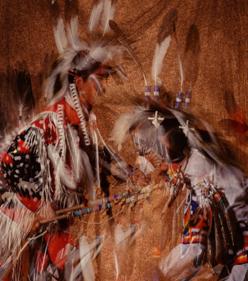 Healers work in cultures that include other specialists such as herbalists, diviners, bonesetters, and midwives. Some healers are very selective in choosing which people they will treat because if they fail, they lose stature. What does it involve? Healers enter a trance to figure out what is wrong with the patient and what to do about it. The healer or an assistant may pray, sing, chant, dance, or drum around the patient. Storytelling and other art forms may also be used. During the trance, the healer's soul is believed to leave the body and travel to the spirit world in a search to help the sick person. This is where the healer communicates with the spirits thought to be responsible for the illness. Although the healer is in a state of trance, he is still conscious and aware. This allows him to bargain with the spirits who can help the patient's illness. The healer returns and shares his or her vision with the sick person. Each healer must complete rigorous training, especially in the ability to achieve the controlled trance required for communication with the spirits. Healers work both with individual patients and with groups. What is the history behind it? Traditional healing of this type may date back as far as 40,000 years. It is believed to have begun in the Altai and Ural Mountains of western China and Russia, probably in the form of a religion. In the Tungusu-Manchurian language, the word shaman means, "one who knows." Native North American healing emphasizes the role faith, hope, and belief play as they are embedded within a community and a culture. Traditional healing emphasizes the importance of relational and cultural elements in determining the effectiveness of complementary and alternative medicine and will reflect upon research methodologies to capture these phenomena. Native American Indian community-based medical systems have a number of rituals and practices: sweating and purging, usually done in a "sweat lodge"; the use of herbal remedies gathered from the surrounding environment and sometimes traded over long distances; and shamanic healing involving naturalistic or personalistic healing. Tribes such as the Lakota and Dineh (Navajo) also use practices such as the medicine wheel, sacred hoop, and the "sing," which is a healing ceremony rite that lasts from two to nine days and nights and is guided by a highly skilled specialist called a "singer." Formal research into the healing ceremonies and herbal medicines conducted and used by bona fide Native American Indian healers or holy people is almost nonexistent, even though Native American Indians believe they positively cure both the mind and body. Ailments and diseases such as heart disease, diabetes, thyroid conditions, cancer, skin rashes, and asthma reportedly have been cured by Native American Indian doctors who are knowledgeable about the complex ceremonies. By Lewis Mehl-Madrona, MD
Healers work in cultures that include other specialists such as herbalists, diviners, bonesetters, and midwives. Some healers are very selective in choosing which people they will treat because if they fail, they lose stature. What does it involve? Healers enter a trance to figure out what is wrong with the patient and what to do about it. The healer or an assistant may pray, sing, chant, dance, or drum around the patient. Storytelling and other art forms may also be used. During the trance, the healer's soul is believed to leave the body and travel to the spirit world in a search to help the sick person. This is where the healer communicates with the spirits thought to be responsible for the illness. Although the healer is in a state of trance, he is still conscious and aware. This allows him to bargain with the spirits who can help the patient's illness. The healer returns and shares his or her vision with the sick person. Each healer must complete rigorous training, especially in the ability to achieve the controlled trance required for communication with the spirits. Healers work both with individual patients and with groups. What is the history behind it? Traditional healing of this type may date back as far as 40,000 years. It is believed to have begun in the Altai and Ural Mountains of western China and Russia, probably in the form of a religion. In the Tungusu-Manchurian language, the word shaman means, "one who knows." Native North American healing emphasizes the role faith, hope, and belief play as they are embedded within a community and a culture. Traditional healing emphasizes the importance of relational and cultural elements in determining the effectiveness of complementary and alternative medicine and will reflect upon research methodologies to capture these phenomena. Native American Indian community-based medical systems have a number of rituals and practices: sweating and purging, usually done in a "sweat lodge"; the use of herbal remedies gathered from the surrounding environment and sometimes traded over long distances; and shamanic healing involving naturalistic or personalistic healing. Tribes such as the Lakota and Dineh (Navajo) also use practices such as the medicine wheel, sacred hoop, and the "sing," which is a healing ceremony rite that lasts from two to nine days and nights and is guided by a highly skilled specialist called a "singer." Formal research into the healing ceremonies and herbal medicines conducted and used by bona fide Native American Indian healers or holy people is almost nonexistent, even though Native American Indians believe they positively cure both the mind and body. Ailments and diseases such as heart disease, diabetes, thyroid conditions, cancer, skin rashes, and asthma reportedly have been cured by Native American Indian doctors who are knowledgeable about the complex ceremonies. By Lewis Mehl-Madrona, MD
Neuromuscular Integration and Structural Alignment (NISA)
NISA was developed in 1980’s by Jean Loving. Its base is in SOMA body work or Rolfing, although it differs from these in that it is a gentler treatment form and is expanded to 12 sessions from SOMA’s 10 sessions. NISA works to stretch, free, and soften the body’s fascial layers in order to restore function to muscle and joints as the layers of fascia regain their elasticity. NISA’s alignment process is one 60 minute session a week for 12 weeks. For more on this topic click here.
NMT is the assessment and treatment of acute and chronic pain syndromes of the soft tissues caused by trauma, postural distortions, and biomechanical dysfunction. The neuromuscular therapist trains in treatment protocols for common pain syndromes. NMT can help with recovery from these conditions.
Okazaki Restoration Therapy “Seifukujitsu”
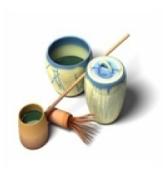 Seifukujitsu was developed by Henry Seishiro Okazaki (1890-1951). He founded Danzan Ryu Jujitsu in Hawaii, and taught this Japanese-based combination of massage, acupressure, and herbal healing. The distinguishing factor is that the majority of the therapy is done with the crux of the elbow. Incorporated into this therapy are Hawaiian Lomi-Lomi, Swedish massage, and Japanese Anma massage with deep tissue and acupressure points. The goals of Okazki are to balance the energy flow in the body known as “Ki” in Japanese or “Chi” in Chinese, to break down scar tissue caused by injury, and to allow healing.
Seifukujitsu was developed by Henry Seishiro Okazaki (1890-1951). He founded Danzan Ryu Jujitsu in Hawaii, and taught this Japanese-based combination of massage, acupressure, and herbal healing. The distinguishing factor is that the majority of the therapy is done with the crux of the elbow. Incorporated into this therapy are Hawaiian Lomi-Lomi, Swedish massage, and Japanese Anma massage with deep tissue and acupressure points. The goals of Okazki are to balance the energy flow in the body known as “Ki” in Japanese or “Chi” in Chinese, to break down scar tissue caused by injury, and to allow healing.
See Acupressure, Shiatsu, Jin Shin Do, Okazaki Restoration Therapy “Seifukujitsu", Chinese Massage Tuina (Tui Na), and Anma (Japanese Massage).
"Ortho" meaning to correct or to straighten, "bio" meaning life, and "nomy" meaning the laws of or study of was developed by the British osteopath and a Judo instructor, Dr. Arthur Lincoln Pauls. With this form of non-invasive form of body therapy the practitioner uses gentle movements and positions of the body to facilitate the change of stress and pain patterns. A strong focus is placed on the comfort of the individual, no forceful manipulations are used. The practitioner also suggests home exercises that individuals can do to further facilitate the neuromuscular re-education process begun in the session. Pauls began teaching in the US in 1976.
 Are specialty footwear or pre-molded foot inserts for shoes for foot & posture-related corrective therapy i.e. Plantar fasciitis, and correction of leg-length differences and much more.
Are specialty footwear or pre-molded foot inserts for shoes for foot & posture-related corrective therapy i.e. Plantar fasciitis, and correction of leg-length differences and much more.
Orthopedic Massage /Orthomassage/Medical
This massage focuses on rehabilitation of orthopaedic conditions, sports injury etc. using manipulation and movement of soft tissue to reduce pain and dysfunction.
This therapy uses a few of the same modalities as massage therapy such as swedish massage, joint mobilization, exercise, nutritional and postural re-education. This is a relatively newly named profession. It does a few of the similar functions as an RMT such as focusing on pain relief, relaxation and regaining flexibility.
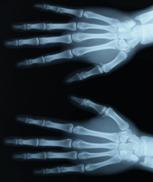 The term is rooted in ancient Greek, osteon, meaning bone, pathos to suffer. The founder,
Andrew Taylor Still, in 1874 while a physician on the Missouri frontier, discovered that he had the ability to put his hands on people and change their physiology. He had many influences such as Methodism, Magnetic Healing, Bone Setting, Evolution Theory, and Spiritualism, for a start. Stills’ experience as an apprentice physician at his father’s side, as a Hospital Steward and then as a Scout Surgeon during the Civil War, gave rise to his school of Osteopathy in Kirksville, Missouri. He wanted to share his knowledge and in 1892, at the age of 64, Dr. Still began teaching formally. The first class consisted of only 22 students, both women and men.
Currently, in most countries, osteopathy is a form of complementary medicine, emphasizing a holistic approach and the skilled use of a range of manual and physical treatment interventions (osteopathic manipulative medicine is known as OMM in the United States). Osteopathy is a therapy, which uses manipulation to treat a wide range of health problems directly or indirectly relating to the muscles, joints and ligaments of the body. The therapy is based upon the principle that restoring harmony and balance to the musculoskeletal system influences all levels of the body. In practice, this most commonly relates to musculoskeletal problems such as back and neck pain. The manipulations are very gentle, pressures and positioning to encourage the tissues, fascia, to gently relax and unwind, releasing the shock of imprinted traumas. Patients often experience a sense of deep relaxation, tingling, fluid flows and relief of pain. Emotional releases may occur as well. The client is typically clothed and the work can be done on a massage table and no lubricant is used. Cranial osteopathy is the source of the
Cranio sacral therapy and Visceral osteopathy is the origin of
Visceral manipulation therapy to name a few of many techniques derived from the osteopathy.
The term is rooted in ancient Greek, osteon, meaning bone, pathos to suffer. The founder,
Andrew Taylor Still, in 1874 while a physician on the Missouri frontier, discovered that he had the ability to put his hands on people and change their physiology. He had many influences such as Methodism, Magnetic Healing, Bone Setting, Evolution Theory, and Spiritualism, for a start. Stills’ experience as an apprentice physician at his father’s side, as a Hospital Steward and then as a Scout Surgeon during the Civil War, gave rise to his school of Osteopathy in Kirksville, Missouri. He wanted to share his knowledge and in 1892, at the age of 64, Dr. Still began teaching formally. The first class consisted of only 22 students, both women and men.
Currently, in most countries, osteopathy is a form of complementary medicine, emphasizing a holistic approach and the skilled use of a range of manual and physical treatment interventions (osteopathic manipulative medicine is known as OMM in the United States). Osteopathy is a therapy, which uses manipulation to treat a wide range of health problems directly or indirectly relating to the muscles, joints and ligaments of the body. The therapy is based upon the principle that restoring harmony and balance to the musculoskeletal system influences all levels of the body. In practice, this most commonly relates to musculoskeletal problems such as back and neck pain. The manipulations are very gentle, pressures and positioning to encourage the tissues, fascia, to gently relax and unwind, releasing the shock of imprinted traumas. Patients often experience a sense of deep relaxation, tingling, fluid flows and relief of pain. Emotional releases may occur as well. The client is typically clothed and the work can be done on a massage table and no lubricant is used. Cranial osteopathy is the source of the
Cranio sacral therapy and Visceral osteopathy is the origin of
Visceral manipulation therapy to name a few of many techniques derived from the osteopathy.
A person who designs cardio and resistive exercise programs, with injury prevention, nutritional supplementation and all aspects of weight training.
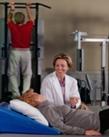 Physiotherapy/ Physical Therapy (PT)
Physiotherapy/ Physical Therapy (PT)
Is another of the health care professions that treats post surgical or physical dysfunction and injury by the use of progressive therapeutic exercise and the application of modalities such as ultra sound and hydrotherapy with the intent to restore strength and normal function.
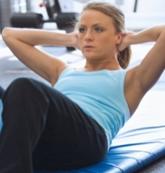 Joseph Pilates (1880-1967) invented and promoted the Pilates method, motivated by his own weakness from childhood asthma, rickets and rheumatic fever. Influenced by his Greek father, a prize-winning gymnast and his German mother, a naturopath, Joe, by the age of 14, was well studied in body-building and gymnastics. Pilates is a low impact body maintenance and rehabilitation program designed strengthen muscles, open joints and release tension. Results include improved posture and ease of movement during daily activities, recreation and sports.
He moved on to design a series of exercises and engineering the equipment for it. Moving to England In 1912 he earned a living as a boxer, circus-performer and self-defense trainer. The British authorities in WWI interned him in the Isle of Man with other German’s in a camp. This is where his fitness training of others took shape and the Pilates Method was born. Once in the US, with his wife Clara (she named it "Contrology", relating to the use of the mind to control the core postural muscles and provide support for the spine). In particular, Pilate’s exercises teach breath awareness and spinal alignment and strengthen the abdominal and the deep torso muscles.
Joseph Pilates (1880-1967) invented and promoted the Pilates method, motivated by his own weakness from childhood asthma, rickets and rheumatic fever. Influenced by his Greek father, a prize-winning gymnast and his German mother, a naturopath, Joe, by the age of 14, was well studied in body-building and gymnastics. Pilates is a low impact body maintenance and rehabilitation program designed strengthen muscles, open joints and release tension. Results include improved posture and ease of movement during daily activities, recreation and sports.
He moved on to design a series of exercises and engineering the equipment for it. Moving to England In 1912 he earned a living as a boxer, circus-performer and self-defense trainer. The British authorities in WWI interned him in the Isle of Man with other German’s in a camp. This is where his fitness training of others took shape and the Pilates Method was born. Once in the US, with his wife Clara (she named it "Contrology", relating to the use of the mind to control the core postural muscles and provide support for the spine). In particular, Pilate’s exercises teach breath awareness and spinal alignment and strengthen the abdominal and the deep torso muscles.
The Austrian, Randolph Stone, by 1954, had written 7 books on polarity having developed it from ancient Eastern and alternative medicine and is based on universal principles of energy attraction, repulsion, and neutrality. He believed that healing can be achieved through manipulation of the reciprocal and complementary energies known as Yin and Yang. These dualities are said to be mediated by a subtle third neutral factor, as in Ayurvedic medicine, its three energies are known as Rajas, Tamas, and Satva. Polarity is centered on the human energy field and uses touch, verbal interaction, nutrition and exercise to seek to balance and restore the natural flow of energy from the universe and into the body through the chakras.
Prenatal and Pregnancy Massage
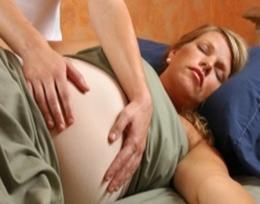 Preformed by a Registered Massage Therapist this is an effective and safe treatment for the prenatal period as well as during labour and postpartum of women’s pregnancies. Prenatal massage techniques can reduce discomfort and enhance the physiological and emotional well-being of both mother and fetus. Massage therapy support can ease labour and decrease anxiety. The postpartum period massage helps the body as it rebalances the physiology and calms a new mother.
Preformed by a Registered Massage Therapist this is an effective and safe treatment for the prenatal period as well as during labour and postpartum of women’s pregnancies. Prenatal massage techniques can reduce discomfort and enhance the physiological and emotional well-being of both mother and fetus. Massage therapy support can ease labour and decrease anxiety. The postpartum period massage helps the body as it rebalances the physiology and calms a new mother.
PNF/Proprioceptive Neuromuscular Facilitation
PNF is a form of resistance exercise used by a therapist to rehabilitate the body. It was developed in the 1940's by Dr. Herman Kabat and expanded by Margaret Knott and Dorothy Voss, it is a combination of isometrics and passive stretching, when resistance is applied, as in the case of Hold-Relax, also called Contract-Relax, it should be the maximum amount of resistance that allows for pain-free movement. However, if improperly used this can actually weaken muscles, decrease endurance, slow neuromuscular control and coordination, and decrease joint stability. PNF is to help the muscle contract, to increase motor control and learning and to help a client gain awareness of the motion and the direction of the motion and, of course, strengthen the body. PNF exercises can be applied to patients of all ages.
Quantum-touch is a hands-on healing system that claims to utilize "universal life force energy" (Qi) to assist oneself and others heal physical and emotional issues this energy healing modality that applies the principles of resonance and entrainment to facilitate healing. The author Richard Gordon (Your Healing Hands - The Polarity Experience) attended a healing workshop taught by healer Bob Rasmusson in 1978. The Quantum-Touch basic techniques were developed from that workshop. Gordon and Rasmusson developed a close relationship while Gordon learned and refined the techniques. In 1986, Gordon began officially using the Quantum-Touch name, and began the development of advanced techniques he introduced in 2001. Quantum-Touch is taught at three levels: basic; and two types of advanced techniques, supercharging and core transformation (I and II). Quantum-Touch is an Practitioners learn to focus and amplify life-force energy (known as “chi” in Chinese and “prana” in Sanskrit) by combining various breathing and body awareness exercises. When the practitioner resonates at a high frequency, the client often entrains to, or matches, the higher frequency, thereby facilitating healing using the body's biological intelligence. Life-force energy affects matter on the quantum, subatomic level and works its way up through atoms, molecules, cells, tissues, and structure.
Reciprocal Inhibition Stretching (RI)
This technique refers to a reflex loop that causes one muscle to relax when the opposing muscle contracts. It works to stretch the targeted muscle by first contracting the opposing muscle, thus inhibiting the target muscle reflexly, enabling the target muscle to stretch farther.
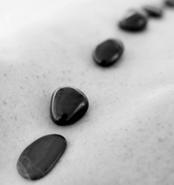 The intent of this treatment is to relax you. Most treatments will relax you on some level, in relaxation massage, relaxation is the only aim. These treatments are great for those with hypertension or high blood pressure, anxiety or distress, those who have difficulty sleeping, to increase clarity for performance and more. It involves lighter pressure, and gentle rhythms, not vigorous, a passive treatment with perhaps soothing long strokes, gentle kneading and rolling of skin and muscle, and perhaps some rhythmic rocking from side to side. A relaxation massage in the UK, specifically refers to a full-body treatment involving soft music, soft lighting and aromatherapy oils.
The intent of this treatment is to relax you. Most treatments will relax you on some level, in relaxation massage, relaxation is the only aim. These treatments are great for those with hypertension or high blood pressure, anxiety or distress, those who have difficulty sleeping, to increase clarity for performance and more. It involves lighter pressure, and gentle rhythms, not vigorous, a passive treatment with perhaps soothing long strokes, gentle kneading and rolling of skin and muscle, and perhaps some rhythmic rocking from side to side. A relaxation massage in the UK, specifically refers to a full-body treatment involving soft music, soft lighting and aromatherapy oils.
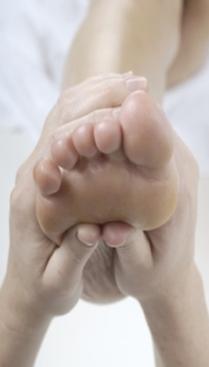 Is a method of stimulating reflex points in the foot, hand or ear that correspond to specific glands, organs or parts of the body. Stimulation of these reflex points results in increased energy or Qi and blood circulation, aiding lymph drainage as well as relieving stress and tension, thus allowing harmony to return to the body. An ear, nose, and throat specialist, William H. Fitzgerald, M.D. and Dr. Edwin Bowers brought the first version to the US in 1913; Fitzgerald claimed that applying pressure had an anaesthetic effect on other areas of the body. A further development occurred in the 1930s. Eunice Ingham, a physiotherapist, mapped the entire body as it corresponded to the feet she called it “zone therapy” and used it to reduce pain. Ingham developed the work into the Ingham Reflex Method of Compression Massage, later known as reflexology. There are ancient versions of these systems and other similar practices from the east, China, India and Tibet and one brought to the US by Stanley Borroughs is known as Vita flex. See
Vita flex.
Is a method of stimulating reflex points in the foot, hand or ear that correspond to specific glands, organs or parts of the body. Stimulation of these reflex points results in increased energy or Qi and blood circulation, aiding lymph drainage as well as relieving stress and tension, thus allowing harmony to return to the body. An ear, nose, and throat specialist, William H. Fitzgerald, M.D. and Dr. Edwin Bowers brought the first version to the US in 1913; Fitzgerald claimed that applying pressure had an anaesthetic effect on other areas of the body. A further development occurred in the 1930s. Eunice Ingham, a physiotherapist, mapped the entire body as it corresponded to the feet she called it “zone therapy” and used it to reduce pain. Ingham developed the work into the Ingham Reflex Method of Compression Massage, later known as reflexology. There are ancient versions of these systems and other similar practices from the east, China, India and Tibet and one brought to the US by Stanley Borroughs is known as Vita flex. See
Vita flex.
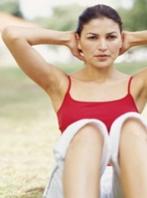 Is rehabilitation exercise, an important part of the therapeutic plan, are a daily form of self care for your use at home. It is an important to be an active participant in your own health and recovery and doing these prescribed remedial exercises can help to quicken your recovery time. Exercise programs can be site specific for neck rehab or can be for the entire body, like postural exercises, they can include stretches or strengthening exercises for the muscles that are designed to address imbalances with counter balance movements, which will then, over a period of time, return the muscles to their balanced state.
Is rehabilitation exercise, an important part of the therapeutic plan, are a daily form of self care for your use at home. It is an important to be an active participant in your own health and recovery and doing these prescribed remedial exercises can help to quicken your recovery time. Exercise programs can be site specific for neck rehab or can be for the entire body, like postural exercises, they can include stretches or strengthening exercises for the muscles that are designed to address imbalances with counter balance movements, which will then, over a period of time, return the muscles to their balanced state.
A method of natural healing based on the application of universal life force energy. The therapist issues high frequency energy out through the hands into another person to correct any imbalances in the receiver.
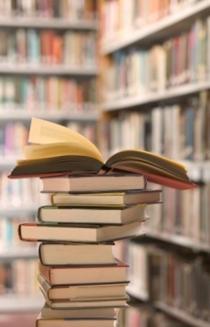 Is an investigation aimed at discovering, interpreting, and revising knowledge. There are many ways to do research but the goal is to generate new knowledge. There are three main forms (the boundaries between them can be fuzzy) first is
exploratory research, which structures and identifies new problems. The second is
Constructive research, which develops solutions to a problem. The third is
Empirical research, which tests the feasibility of a solution using observed evidence. In addition, there are terms for the way to source the research primary and secondary. Primary is also known as field research and involves collection of new data using many different tools like questionnaires and interviews. The secondary, or desk research, which involves using existing information, research and possibly summarizing or collating it for use in a current study this is used in medical and market research. These are some of the types of research methods
case study, classification, Experience and intuition, Interviews, participant observation, simulation, statistical surveys and content or textual analysis.
Click here to See Massage.ca’s Massage Therapy Research Links.
Is an investigation aimed at discovering, interpreting, and revising knowledge. There are many ways to do research but the goal is to generate new knowledge. There are three main forms (the boundaries between them can be fuzzy) first is
exploratory research, which structures and identifies new problems. The second is
Constructive research, which develops solutions to a problem. The third is
Empirical research, which tests the feasibility of a solution using observed evidence. In addition, there are terms for the way to source the research primary and secondary. Primary is also known as field research and involves collection of new data using many different tools like questionnaires and interviews. The secondary, or desk research, which involves using existing information, research and possibly summarizing or collating it for use in a current study this is used in medical and market research. These are some of the types of research methods
case study, classification, Experience and intuition, Interviews, participant observation, simulation, statistical surveys and content or textual analysis.
Click here to See Massage.ca’s Massage Therapy Research Links.
Rolfing /Structural Integration
In the 1950’s, borrowing from osteopathy, (including cranial osteopathy), yoga, Alexander Technique, and Feldenkrais, Dr. Ida Rolf a biochemist and Rockefeller University fellow, developed her version of an holistic system, a series of 10 treatments over 10 weeks that comprises soft tissue manipulation and movement education and called it Structural Integration (nicknamed Rolfing). Like a deep massage, the therapist with skiled fingers, hands, and elbows works slowly manipulates the body's connective tissue or fascia and goes through deep layers of tissue to release built up tension to rebalance the body. The aims of this system of hands-on manipulation movement re-education are to utilize your energy much more efficiently.
Is a gentle, hands-on form of working with chronically tight muscles. The aim is to bring the client to a better understanding of their physical and emotional state. In the 1930s, Marion Rosen, founder the Rosen Institute in Berkeley, California, was a physiotherapist both in Stockholm and at the Mayo Clinic. She studied breath and relaxation in Germany with Lucy Heyer who trained with Elsa Gindler, a renowned innovator of somatic therapies. This observational work can bring up buried feelings and memories; it is also used as a tool to promote personal growth. Marion system is a combination of manipulating the soft tissue, monitoring of the client’s breathing patterns, and communicating to promote physical ease, pain relief, and a deeper contact with the inner self.
The therapist performs a series of movements (rocking and shaking) that are gradually increased and maintained to stretch the tissues which increases mobilization and relaxation that prepares the client for massage.
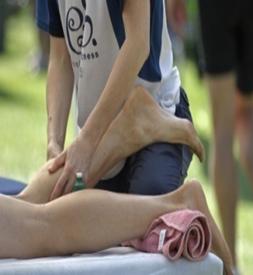 Medical doctor degrees in physical therapy know as physiatrists were employed in the Soviet Union to research the benefits of using natural healing modalities. They developed these methods further after World War II when pharmaceuticals were in short supply. A form of petrissage was devised to reverse atrophy in muscles and help stimulate new growth. This technique alters the basic strokes of classical massage so each stroke provides the client with the least invasive and most comfortable treatment each stroke has a known physiological effect on a healthy or dysfunctional body because it is based on the physiology of a dysfunction rather than on anatomy as the principal guideline for treatment. MT’s are regarded as medical professionals; the massage therapy department is often the largest in Russian hospitals and clinics, because massage therapy is crucial to rehabilitation. It is recommended for seniors because of its’ gentle, non-invasive nature.
Medical doctor degrees in physical therapy know as physiatrists were employed in the Soviet Union to research the benefits of using natural healing modalities. They developed these methods further after World War II when pharmaceuticals were in short supply. A form of petrissage was devised to reverse atrophy in muscles and help stimulate new growth. This technique alters the basic strokes of classical massage so each stroke provides the client with the least invasive and most comfortable treatment each stroke has a known physiological effect on a healthy or dysfunctional body because it is based on the physiology of a dysfunction rather than on anatomy as the principal guideline for treatment. MT’s are regarded as medical professionals; the massage therapy department is often the largest in Russian hospitals and clinics, because massage therapy is crucial to rehabilitation. It is recommended for seniors because of its’ gentle, non-invasive nature.
Sensory Motor Amnesia Therapy (SMAT)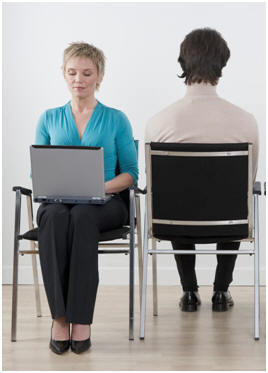
In the same way that the brain forgets information we don’t use, the brain also forgets physical movements we don’t use. This bodily memory loss of the nervous system is considered a malfunction by Thomas Hanna, the founder Novato Institute for Somatic Research and Training in 1975, (a philosopher and a Feldenkrais and Functional Integration practitioner). Developed 30 years ago, retraining the body with the assistance of somatic exercises is the focus of this work. The central nervous system (CNS), which consists of the brain and spinal cord, receives information from sensory nerves and sends out information on motor nerves and tells your body what to do. This sensory-motor feedback loop continually responds to daily stresses and traumas with specific muscular reflexes. When reflexes recur repeatedly, they create habitual muscle contractions that become so deeply ingrained and unconscious; we eventually no longer remember alternative movements. Therefore, we are unable to voluntarily relax. The result is sensory-motor amnesia, stiffness, soreness, and limited range of motion. However, this can affect the entire body because the entire body compensates for a problem in any specific location. Sensory-motor amnesia is an adaptive response of the central nervous system, and this response can be unlearned using neurologically based exercises. Hence the “use it or lose it” reality. Add to that the characteristics of aging. If we slow down and don’t physically challenge ourselves we will become weaker and less reactive. Hanna Somatic Education exercises are designed to change your muscular system by changing your central nervous system.
Shiatsu, Including Moxibustion
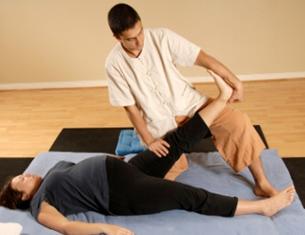 This is a traditional Japanese hands-on therapy. This is based on anatomical and physiological theory and is regulated as a licensed medical therapy with the Ministry of Health and Welfare in Japan. "Shiatsupractor" is the name given to a recently proposed international standardized shiatsu license in Canada; they are required to study at least three years which is 2,200 hour educational program of shiatsu therapy in the universities or colleges which are authorized by the Ministry of Health and Welfare and pass the national exam to be licensed. Shiatsu’s first published citing may be in a 1915 book, Tenpaku Tamai's Shiatsu Ryoho. Pressure with thumbs, fingers and palms applied to determined areas and points of the human body, without the use of any mechanical or of another type instrument, correcting internal dysfunctions, promoting and keeping the health and treating specific illnesses.
Moxibustion (Chinese:
灸; pinyin: jiǔ. or Yomogi (蓬) a
synonym for moxa in Japan) treatment consists of warming certain acu-points with glowing moxa stick it is used in both acupuncture and acupressure treatments. Moxa is a dried preparation of the medicinal herb, Mugwort, ground up into a fluff or processed into a stick. Mugwort acts as an emmenagogue, meaning that it stimulates blood-flow in the pelvic area and uterus. It is used to treat certain conditions with cold symptoms and can be helpful for menstrual problems. It can stimulate circulation and speed recovery. It is traditional used in medical systems of China, Japan, Korea, Vietnam, Tibet, and Mongolia.
This is a traditional Japanese hands-on therapy. This is based on anatomical and physiological theory and is regulated as a licensed medical therapy with the Ministry of Health and Welfare in Japan. "Shiatsupractor" is the name given to a recently proposed international standardized shiatsu license in Canada; they are required to study at least three years which is 2,200 hour educational program of shiatsu therapy in the universities or colleges which are authorized by the Ministry of Health and Welfare and pass the national exam to be licensed. Shiatsu’s first published citing may be in a 1915 book, Tenpaku Tamai's Shiatsu Ryoho. Pressure with thumbs, fingers and palms applied to determined areas and points of the human body, without the use of any mechanical or of another type instrument, correcting internal dysfunctions, promoting and keeping the health and treating specific illnesses.
Moxibustion (Chinese:
灸; pinyin: jiǔ. or Yomogi (蓬) a
synonym for moxa in Japan) treatment consists of warming certain acu-points with glowing moxa stick it is used in both acupuncture and acupressure treatments. Moxa is a dried preparation of the medicinal herb, Mugwort, ground up into a fluff or processed into a stick. Mugwort acts as an emmenagogue, meaning that it stimulates blood-flow in the pelvic area and uterus. It is used to treat certain conditions with cold symptoms and can be helpful for menstrual problems. It can stimulate circulation and speed recovery. It is traditional used in medical systems of China, Japan, Korea, Vietnam, Tibet, and Mongolia.
STR is a injury treatment technique developed in Europe in 1996 by Stuart Taws. STR is a combination of Myofascial Release, Therapeutic Massage, and Active Assisted Stretching. Stuart worked with sports injuries of the world’s fastest sprinters on the Olympic team. The mechanical concept was to strip out scar tissue using fairly deep pressure through a short stretch and regain muscle memory. This is painful but acceptable for young athletes. Soft Tissue Release (STR) is a dynamic, highly effective technique that has an immediate and powerful effect on muscle and connective tissue.
This term comes from the Greek word Somatikòs, meaning of the body. There are many types of somatic therapies.
This approach helps rid the mind and body of residual effects of past trauma. Biophysicist Dr. Zvi Karni and Dr. John Upledger came to the realization that the body often absorbs the force in an accident, injury, or emotional trauma and holds on to it. The term used for the body holding pattern or isolation of the force of the trauma is called an “energy cyst.” The aim of this therapy is to physically identify and expel the energy cyst through re-experiencing and resolving unpleasant incidents and all its associated negative responses.
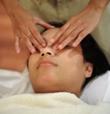
A variety of hydrotherapy body treatments administered in spas such as seaweed & herbal wraps, sugar & salt scrubs, spa or (relaxation) type massage etc. Also see
Hydrotherapy.
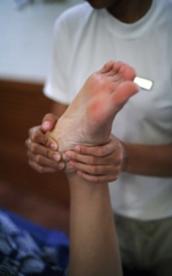 Sport massage enhances athletic performance and recovery. The most beneficial times for the professional athlete are:
Pre-event massage at the performance site; the client is fully clothed and the therapist uses fast-paced and stimulating techniques which speeds the blood flow warms up muscles. The athlete is encouraged to focus on visualizing her success in the upcoming event.
Post-event massage is also at the performance site; again through the clothes and this time the aim is to calm and flush toxins and waste products from the body reducing recovery time, enabling an athlete to resume training sooner.
Injury recovery is sped up with massage therapy and will improve the quality of healing. Often athletic taping techniques are offered and can help prevent injury as well as protect the athlete from re-injury by limiting the movement in an injured joint to prevent excess or abnormal movement.
Sport massage enhances athletic performance and recovery. The most beneficial times for the professional athlete are:
Pre-event massage at the performance site; the client is fully clothed and the therapist uses fast-paced and stimulating techniques which speeds the blood flow warms up muscles. The athlete is encouraged to focus on visualizing her success in the upcoming event.
Post-event massage is also at the performance site; again through the clothes and this time the aim is to calm and flush toxins and waste products from the body reducing recovery time, enabling an athlete to resume training sooner.
Injury recovery is sped up with massage therapy and will improve the quality of healing. Often athletic taping techniques are offered and can help prevent injury as well as protect the athlete from re-injury by limiting the movement in an injured joint to prevent excess or abnormal movement.
An osteopathic technique that changes the interaction between dysfunctional vertebrae and reduces fascial tension and restores joint mobility.
Structural Integration /Rolfing
A system of hands-on connective tissue manipulation and movement education aimed at releasing stress patterns, and in helping the client move and function with greater freedom, and effortlessly maintain a more upright posture. See Rolfing.
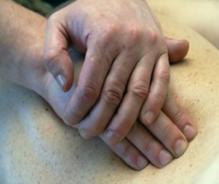 Swedish massage has become a catch all phrase for the manipulation of the soft tissues of the
body, including skin, muscles, ligaments, tendons, and fascia. Most often performed with oil. The specific swedish techniques include stroking, vibrations, shaking, effleurage (light long strokes), petrissage (circular manipulation), tapotement (percussive techniques) and rocking. Also see
Massage Therapy.
Swedish massage has become a catch all phrase for the manipulation of the soft tissues of the
body, including skin, muscles, ligaments, tendons, and fascia. Most often performed with oil. The specific swedish techniques include stroking, vibrations, shaking, effleurage (light long strokes), petrissage (circular manipulation), tapotement (percussive techniques) and rocking. Also see
Massage Therapy.
TENS Unit (Transcutaneous Electrical Nerve Stimulator)
The TENS is an electronic machine that conducts electrical signals with two or more electrodes through the surface of the skin to stimulate nerves. In 1974 the battery-operated TENS unit has a pulse generator, frequency and intensity controls, a small transformer and a number of electrodes were brought to market. Some meta-analysis going back many years show the TENS is effective treatment for chronic musculoskeletal pain. Also used as a method of pain relief, in Europe, during labour. Also in palliative care and pain medicine they are an attempt to alleviate neuropathy (pain due to nerve damage). Historically in the 16th through the 18th centuries various electrostatic devices were used for headache and other pains. Benjamin Franklin supported this method for pain relief, in the 1900's a device called the electreat, along with numerous other devices were used for pain control and cancer cures.
A combination of Yoga stretches, pressure point stimulation of the meridians – Acupressure points, muscle massage and joint manipulation/stimulation. This is done traditionally on a mat on the floor without oil.
Uses gentle rocking of the body and manipulation of the joints and muscles. Dr. Milton Trager (1908-1997), the creator, established the Trager Institute in 1980. Overcoming his sickly childhood, he strengthened his body with gymnastics and dance. He began his therapy work at 18 years of age and in 1955 when he became an M.D. in Mexico. He claims this technique not only helps facilitates deep relaxation, increasing physical mobility and mental clarity, it also release deep seated physical and mental patterns. Using gentle, non-intrusive, natural movements, it connects people with their energy. Trager created Mentastics (mental gymnastics) to complement this therapy.
Psychological trauma can range from intense grief as in the sudden death of a loved one, to the shock of personally experiencing, or by witnessing, acts of violence or psychological abuse. Often because of the dissociate survival skills taken on during the traumatic events, survivors of trauma often can't feel their bodies. The capacity to experience life is greatly diminished. This unassuming, hands-on modality helps clients recover from trauma and abuse by re-integrating and encouraging a sense of wholeness. During these treatment sessions the client is asked to think through their own somatic needs. Where is the pain? Where is the tension? What does it feel like? Is it okay to touch? Chris Smith, the founder of Trauma Touch Therapy based her philosophy on the work of Carl Rogers. "He had this notion of unconditional, positive regard and he felt it was the most potent element of change we have. We don't have to say anything profound or do anything other than just be very present for the client”. The 10 sessions are done typically with the client clothed. Work can be done on a massage table, in a chair or in any position most comfortable for the client. Clients are required to be in active counselling or psychotherapy.
Are hyper-irritable areas occurring like small knots in the muscles tissue throughout the body. They can also be felt as painful lumps of hardened fascia/connective tissue, and are painful when pressed. They can transfer pain and tenderness (known as "referral patterns") into the joints and muscles. In some cases, the referred pain (from an active trigger point) can mimic other ailments, like heart attacks or tendonitis. There are active trigger points which cause ongoing, persistent pain and latent trigger points which are pain free until pressed. These referral patterns of sensation include sensations such as sharp pain, dull ache, tingling, pins and needles, hot or cold, as well as symptoms such as nausea, ear ache, equilibrium disturbance and/or blurred vision. These small, hyper-irritable sites in the muscle tissue often refer pain to other locations causing conditions such as headaches or sciatica. Trigger point releases are typically done as part of a massage therapy treatment and are accompanied by stretching and massage. See Trigger Point Therapy below.
Trigger Point Therapy/ Myofascial Release
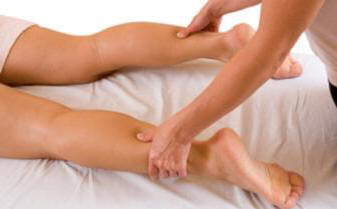 Simply put, the therapist locates and deactivates trigger points. This therapy affects the muscles and connective tissues layers and deeper ligament structures. Applying these release techniques is very similar to acupressure. The term
Myofascial appeared first in medical literature by Janet G. Travell M.D. in the 1940s, referring to musculoskeletal pain and trigger points. In 1976, she started using the terminology "Myofascial Trigger Point" and, in 1983, published the famous reference "Myofascial Pain & Dysfunction: The Trigger Point Manual”. Treatment begins with a physical examination a focus on the area of pain and discomfort by observing the movements and posture, areas of muscle shortening with weakness and decreased movement. When on the massage table you should be as relaxed as possible. Manual massage techniques are used for stretching the fascia and releasing bonds between fascia, integument, muscles, and bone. Trigger points can be felt in amongst normal muscle tissue. Once a trigger point is located, the local twitch response can be elicited as muscle or skin twitching. You can feel sour (light electric-like sensation) or numb, but not knife-cut like pain when the trigger point is pressed and released. It is a pain-relief technique to alleviate muscle spasms and cramping. This can be done on a massage table, with or without oils.
Simply put, the therapist locates and deactivates trigger points. This therapy affects the muscles and connective tissues layers and deeper ligament structures. Applying these release techniques is very similar to acupressure. The term
Myofascial appeared first in medical literature by Janet G. Travell M.D. in the 1940s, referring to musculoskeletal pain and trigger points. In 1976, she started using the terminology "Myofascial Trigger Point" and, in 1983, published the famous reference "Myofascial Pain & Dysfunction: The Trigger Point Manual”. Treatment begins with a physical examination a focus on the area of pain and discomfort by observing the movements and posture, areas of muscle shortening with weakness and decreased movement. When on the massage table you should be as relaxed as possible. Manual massage techniques are used for stretching the fascia and releasing bonds between fascia, integument, muscles, and bone. Trigger points can be felt in amongst normal muscle tissue. Once a trigger point is located, the local twitch response can be elicited as muscle or skin twitching. You can feel sour (light electric-like sensation) or numb, but not knife-cut like pain when the trigger point is pressed and released. It is a pain-relief technique to alleviate muscle spasms and cramping. This can be done on a massage table, with or without oils.
Qigong Tuina is one of the three main modalities of Chinese medicine, the others being acupuncture and herbs. It is often taught and practised with acupuncture, but the techniques can also be used independently. It is a very ancient and versatile style of massage which is still extensively used in China to treat a wide variety of conditions, both internal and musculo-skeletal. Also see Chinese Massage
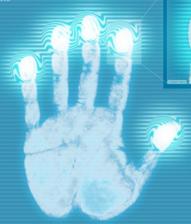 This energy exchange therapy, the therapist uses the hands as a focus to facilitate the healing process and to induce deep relaxation. Dolores Krieger Ph.D., R.N., and nursing educator at New York University, and Dora van Gelder Kunz (1904-1999)
president of the Theosophical Society of America, developed TT in the 1970’s. It has roots in ancient healing but has no connection with any religious beliefs. Scientific studies have shown that it increases the oxygen-carrying capacity of red blood cells, lowers high temperatures and reduces restlessness. TT is noted for treatment with circulatory and lymphatic disorders, musculo-skeletal pain issues as well as mental disorders. In treatment, the focus is toward
a state of health with life energy flowing freely and orderly in, through, and out of the field. Disease or injury is thought to obstruct or deplete the flow of energy. Touch practitioners attempt to influence the energy flow to restore the integrity of the field and move it toward wholeness and health. A session usually does not exceed 20 minutes while a client is in a sitting or lying position and is followed by a rest period. Frequently, this was taught to hospital nursing staff.
This energy exchange therapy, the therapist uses the hands as a focus to facilitate the healing process and to induce deep relaxation. Dolores Krieger Ph.D., R.N., and nursing educator at New York University, and Dora van Gelder Kunz (1904-1999)
president of the Theosophical Society of America, developed TT in the 1970’s. It has roots in ancient healing but has no connection with any religious beliefs. Scientific studies have shown that it increases the oxygen-carrying capacity of red blood cells, lowers high temperatures and reduces restlessness. TT is noted for treatment with circulatory and lymphatic disorders, musculo-skeletal pain issues as well as mental disorders. In treatment, the focus is toward
a state of health with life energy flowing freely and orderly in, through, and out of the field. Disease or injury is thought to obstruct or deplete the flow of energy. Touch practitioners attempt to influence the energy flow to restore the integrity of the field and move it toward wholeness and health. A session usually does not exceed 20 minutes while a client is in a sitting or lying position and is followed by a rest period. Frequently, this was taught to hospital nursing staff.
Most commonly known for its use in medical diagnostics by radiating sound waves to create images of babies, organs and muscles, this modality is also directly healing in certain wavelengths, helping to reduce inflammation. Skilled therapists can reliably and accurately calibrate the equipment which is necessary in order to deliver prescribed doses of ultrasound to patients both safely and effectively. Sound waves are pulsed at the area causing pain at a million times per second. These waves stimulate your joints, ligaments, tendons, muscles and other tissues providing targeted pain relief without drugs or surgery. Improper training increases the risk of incorrect usage which can, at best, reduce the benefits of ultrasound and, at worst, result in tissue damage.
This ancient pressure point clicking type technique was believed to have originated in Tibet several thousands of years ago. Stanley Burroughs, who revived this tradition and imported it to the US, recommended Vita flex as a daily practice. Weakened or injured areas can be corrected by stimulating the reflex points. Vita Flex is the short for the term “vitality through the reflexes.” This is a complete system and can help healing using the reflex system of internal body controls to release tensions, congestion and imbalances.
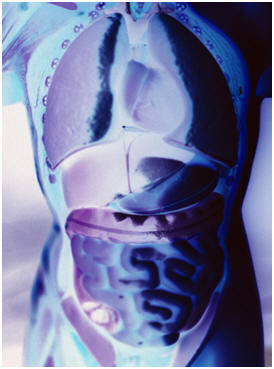 This gentle, hands-on, osteopathic technique works on the fascia of the abdominal organs, to alleviate points of tension throughout the body. Visceral manipulation, known in Tibet for over 200 years, was adapted by Jean Pierre Barrall, a French osteopath. His osteopathic version is known internationally. Spasms, adhesions and discomfort of the abdomen caused by severe trauma can cause chronic irritation and fascial displacement. The gentle, deep abdominal manipulation helps reduce the blockages and restrictions of the tissues and restores the proper movement of the organs. Visceral massage can ease back pain, indigestion and discomfort caused by abdominal duress. No oils are used.
This gentle, hands-on, osteopathic technique works on the fascia of the abdominal organs, to alleviate points of tension throughout the body. Visceral manipulation, known in Tibet for over 200 years, was adapted by Jean Pierre Barrall, a French osteopath. His osteopathic version is known internationally. Spasms, adhesions and discomfort of the abdomen caused by severe trauma can cause chronic irritation and fascial displacement. The gentle, deep abdominal manipulation helps reduce the blockages and restrictions of the tissues and restores the proper movement of the organs. Visceral massage can ease back pain, indigestion and discomfort caused by abdominal duress. No oils are used.
Also see
Abdominal Massage and
Osteopathy.
Transforms gentle Shiatsu techniques and stretches by taking them into a warm aquatic environment. Watsu promotes flexibility while the client experiences tranquility while floating. The origins of watsu were at Harbin Hot Springs where Harold Dull brought his knowledge of Zen shiatsu into a therapeutic pool environment. The water amplified the effects of the shiatsu techniques and with profound results. Not only by the warmth increasing flexibility of the stretches but the energy release experienced along the meridians where the life force flows. The client is relaxed and floating in warm water which provides ideal support for freeing the spine. The whole body is in continual movement, each move flowing gracefully into the next. Also see aquatic massage.
Developed by Dr Fritz Smith by 1975, ZB is a hands-on body and mind system. Its aim is to align body energy with the body's physical structure. A treatment process generally takes between 30 and 40 minutes and is performed with you clothed and seated, moving from there to a reclining position on your back. Dr. Smith received osteopathic degree in 1955 and his MD in 1961. During the '60s and '70s he investigated the field of study as a student of Rolfing®, yoga, meditation and Eastern philosophies. In 1972, he became an acupuncturist at Jack R. Worsley’s ‘Chinese College of Acupuncture’ in England. Then under the teaching of Swami Muktananda, Fritz experienced intense personal revelations these experiences became the catalysts for the designing his Zero Balancing technique.
Please read our Disclaimer.
Is there a therapy not here that you would like to see included? To contribute a term, its history and a definition to massage.ca glossary click here.
Therapists: find out about listing here >>
St. John's, NF • Sudbury • Sydney, NS • Toronto • Vancouver • Victoria • Whistler • Windsor • Winnipeg
Chair Massage • On-site Massage • Featured Websites Massage.ca: Glossary of Massage Therapy
Massage Therapy Glossary; Massage Therapy Glossary Terms
| Privacy Policy | | | Search | | | Site Map | | | Help |
